An inviting Craftsman exterior thrives on authenticity: honest materials, human-scaled proportions, and the small handcrafted touches that tell a home’s story. In the ideas ahead you’ll see how classic hallmarks—low-slung rooflines, tactile stone bases, earth-toned palettes—pair effortlessly with subtle modern upgrades like energy-efficient windows and steel-framed doors. Whether you’re restoring a century-old bungalow or giving a newer build richer curb appeal, each concept offers actionable details that celebrate durability, artistry, and that unmistakable porch-centric warmth people love about Craftsman architecture.
1. Craftsman Tapered Porch Columns on Stone Piers
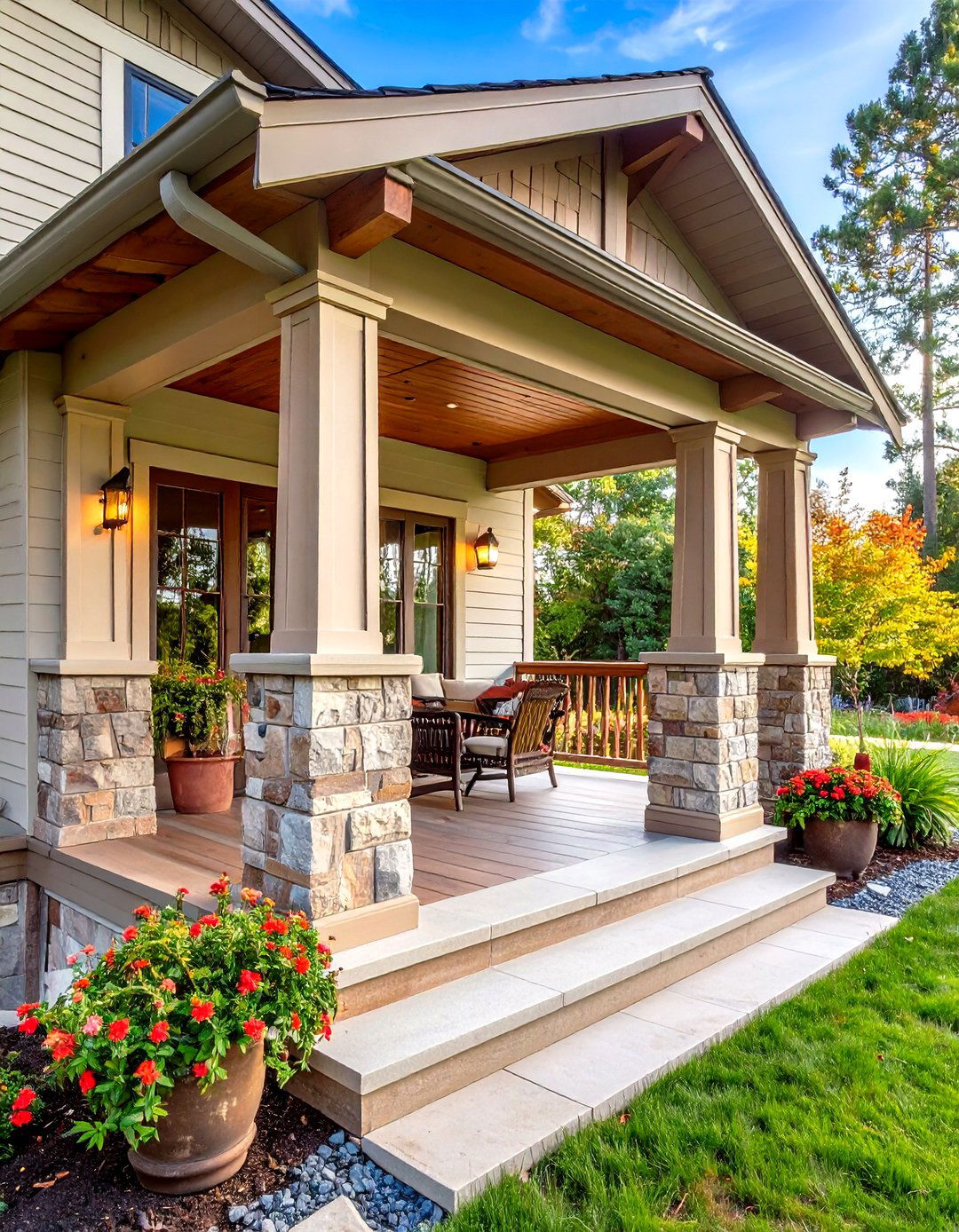
A stately Craftsman porch begins with the signature tapered column, wider at the base and narrowing toward the capital to suggest grounded strength. The shape instantly conveys handcrafted presence, and when those columns rest on rough-cut stone piers they add honest texture that anchors the façade. Choose chunky square shafts wrapped in cedar or fiber-cement boards, then cap the transition with a simple square abacus for clean lines. For an owner-built look, mimic historic proportions: roughly two-thirds column, one-third masonry pier. Finally, stain or paint the wood a warm neutral that complements the stone’s variegation so the two elements read as one cohesive pedestal. Affinity Stone Wholesale Millwork
2. Craftsman Exposed Rafter Tails and Decorative Brackets
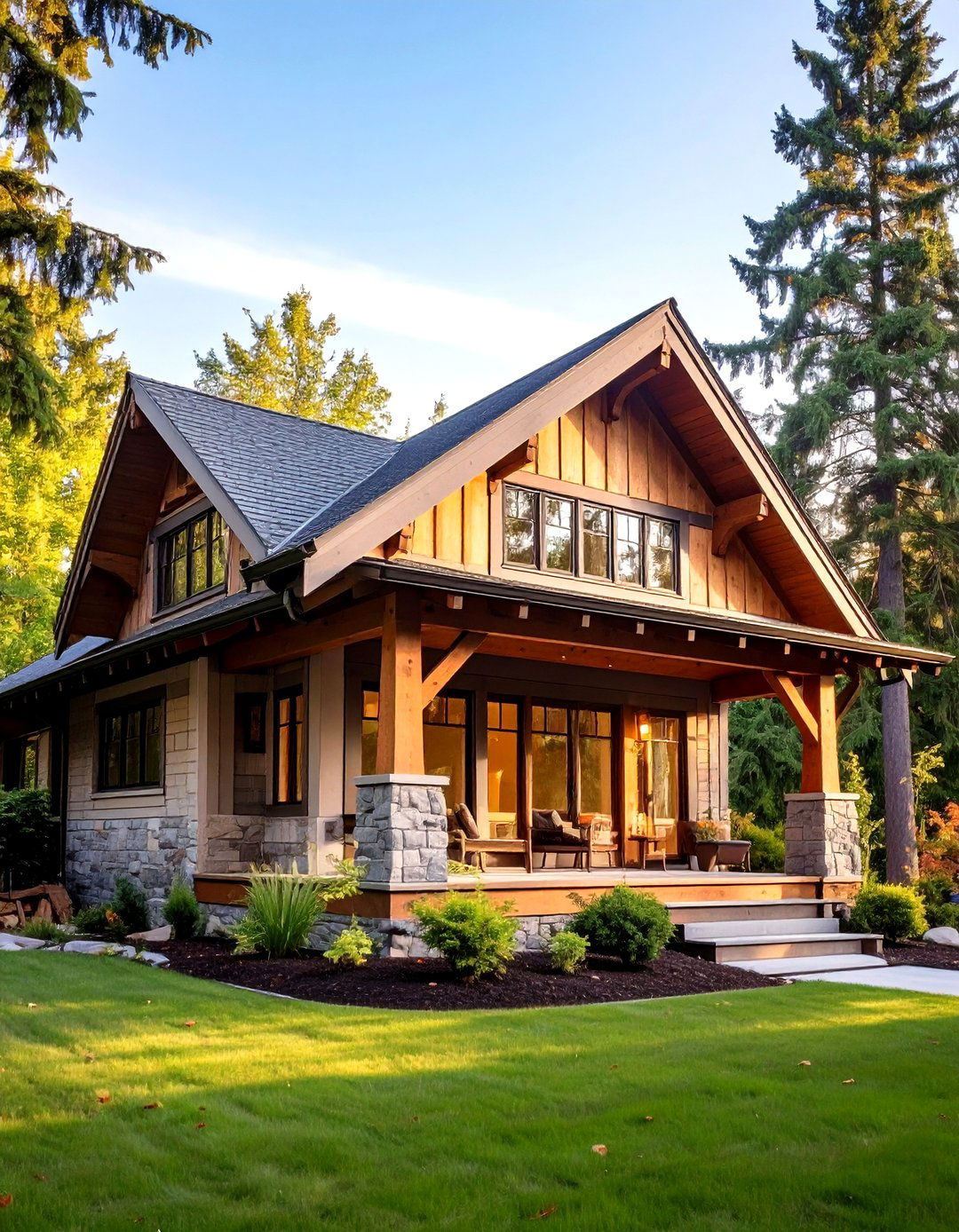
Unlike many styles that conceal roof framing, Craftsman design proudly showcases structure. Leaving rafter tails exposed under deep eaves highlights the honesty of construction while casting rhythmic shadow lines that animate the façade. Add corbel-style knee braces or triangular brackets beneath the gable ends for extra emphasis and a subtle Arts-and-Crafts flourish. Paint rafters and brackets the same trim color for unity or stain them to echo porch beams. Spacing brackets directly beneath every second or third rafter keeps the look balanced rather than busy. These small carpentry details cost little but telegraph handcrafted quality from the street. Goddensudik Wholesale Millwork
3. Craftsman Low-Pitched Gable Rooflines for Timeless Silhouette
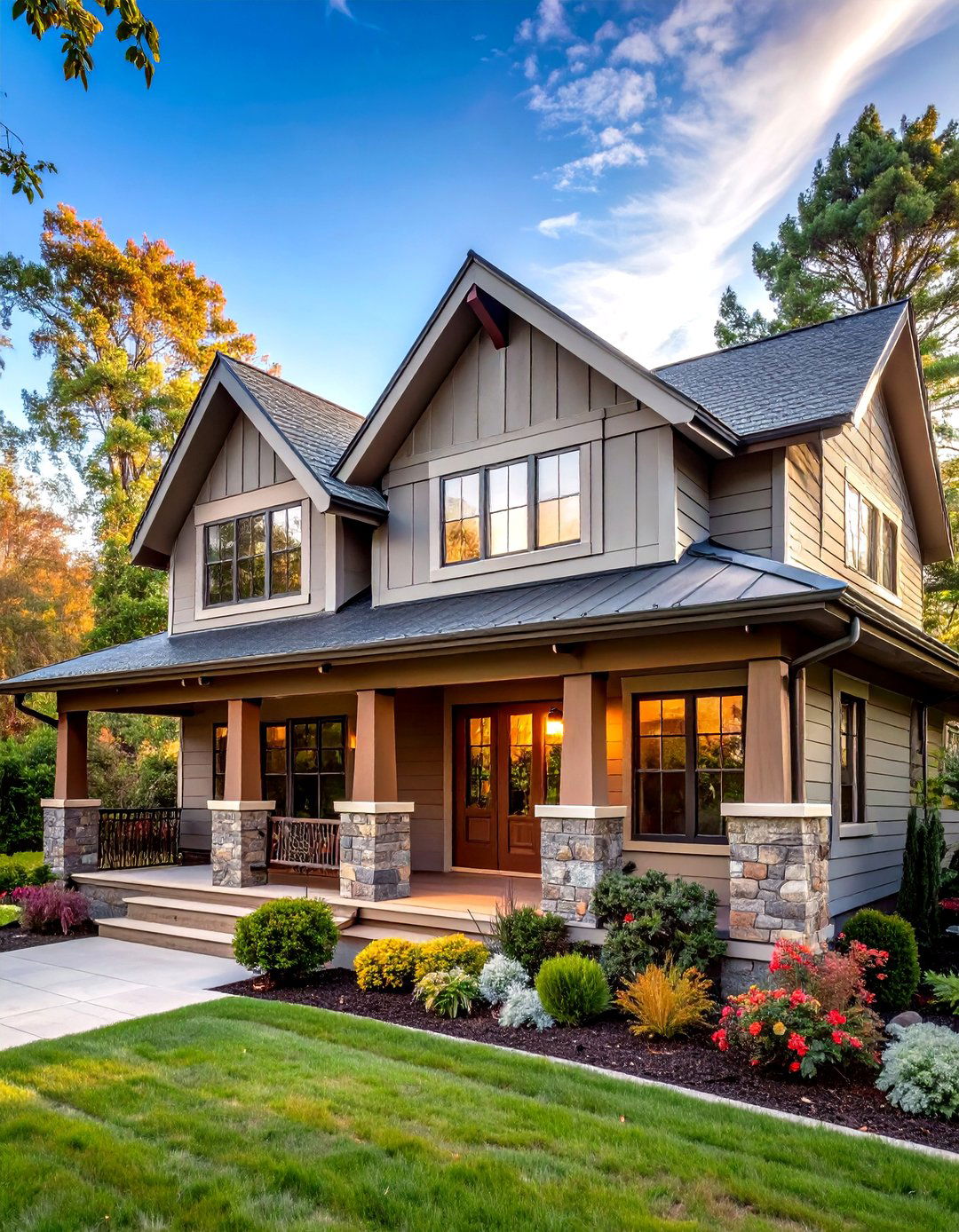
A low-sloped gable, typically 4:12 or less, is the Craftsman roof’s calling card, creating a generous overhang that shades windows and frames the porch. This quiet horizontal emphasis helps the home nestle into its landscape instead of towering over it. Wide fascia boards at the gable ends reinforce the roof’s visual weight, while open eaves invite ventilation that keeps attics cooler in warm climates. Pair a primary front-facing gable with one or two side sheds to break up massing without losing simplicity. Choosing architectural shingles in muted browns or grays grounds the form in nature’s palette. Goddensudik
4. Craftsman Earth-Toned Paint Palette That Echoes Nature
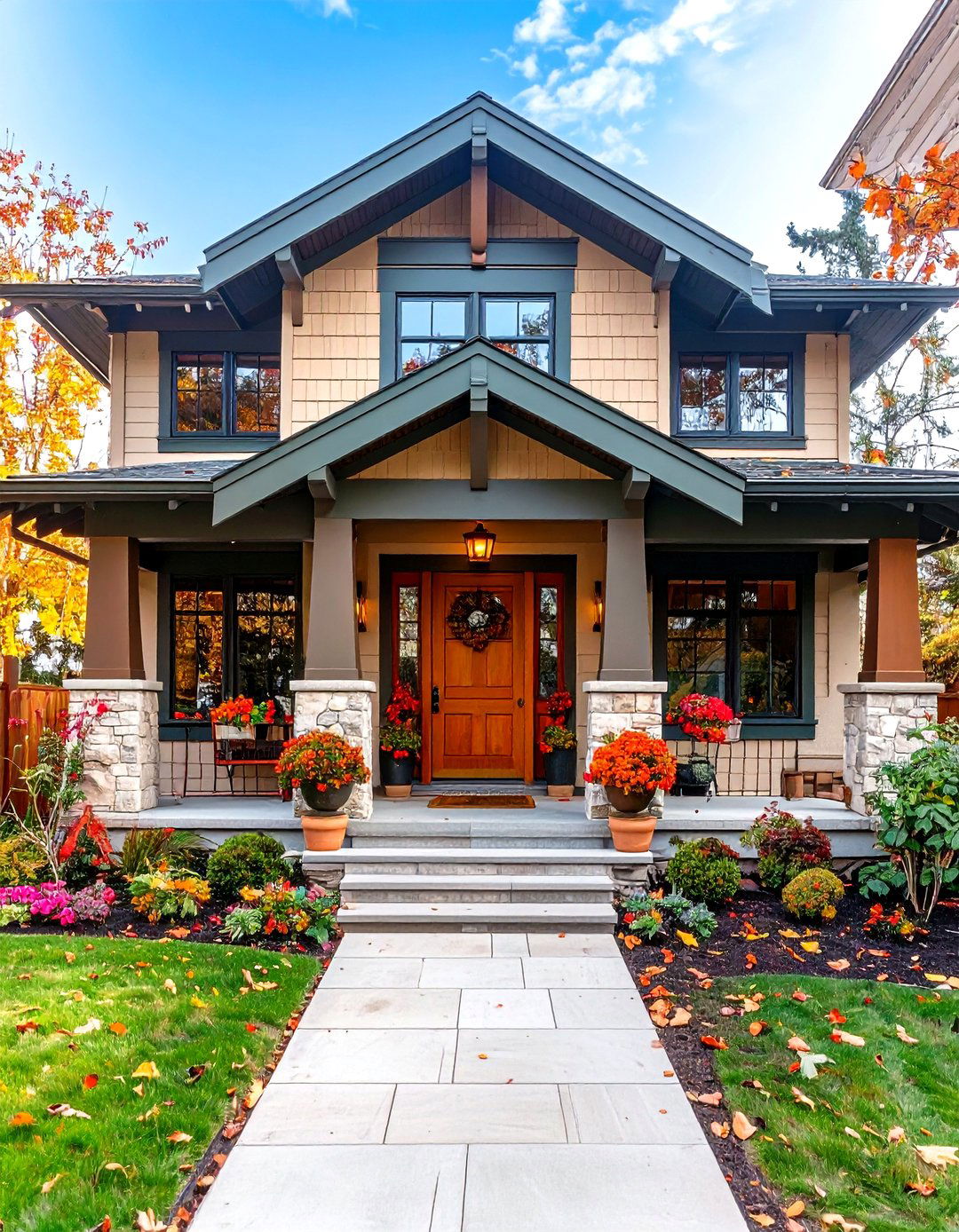
Earth-inspired body colors—olive, taupe, terracotta, pewter—remain a hallmark because they harmonize with stone, wood, and surrounding plantings. Accent the fascia, rafter tails, and brackets in a slightly darker or lighter shade from the same family for subtle depth. Historic samples show warm golds and watery blues as lively door highlights, proving “neutral” needn’t mean dull. A three-tone scheme (body, trim, accent) respects tradition while letting you personalize. When selecting paint, favor matte or satin finishes that absorb light and highlight grain rather than high-gloss sheens that feel out of period. Sherwin-Williams Modern Bungalow Furniture and Design
5. Craftsman Mixed-Material Facades with Shingle, Wood, and Stone
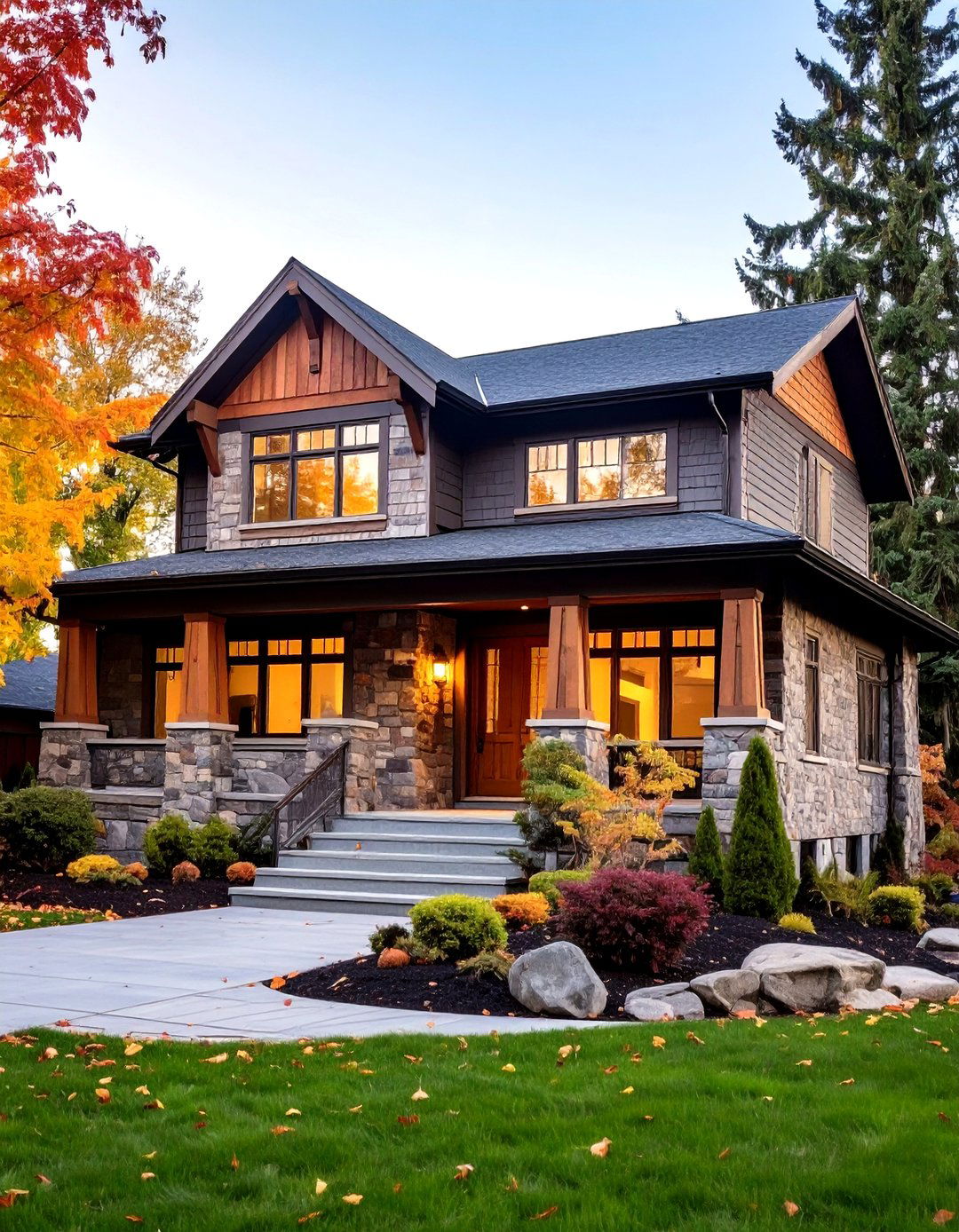
A compelling Craftsman exterior often layers materials the way nature layers strata. Stone or brick bases transition to clapboard siding or cedar shingle in the gable peaks, creating both visual weight and weather protection where it matters most. Horizontal belly bands hide material transitions while accentuating the home’s grounded stance. Shake patterns—straight, staggered, or fish-scale—add texture without resorting to ornament. Keep colors cohesive by pulling a trim hue from the stone’s undertone and repeating it on window sashes for harmony rather than contrast. This restrained blend broadcasts craftsmanship without shouting. Better Homes & Gardens Homebuilding
6. Craftsman Spacious Front Porch as Outdoor Living Room

For early-1900s families, the porch was the original living room, and its charm endures. Extend porch depth to at least eight feet so rockers don’t pinch circulation, then frame the space with robust square columns and a simple beadboard ceiling. Incorporate ceiling-mounted fans and mission-style lanterns to make lingering on summer evenings comfortable. Layer planters, a braided rug, and swing seating to blur indoors and out, encouraging neighborly conversation. Because the porch spans the home’s width, even modest bungalows feel generous and welcoming from the curb. Homes & Gardens Homes & Gardens
7. Craftsman Entry Door with Divided-Light Sidelights

A, nothing says “welcome” like a solid-wood Craftsman door topped with a grid of square lites and flanked by matching sidelights. The small panes recall artisan joinery while allowing filtered daylight to spill into the foyer. Opt for insulated, flush-glazed glass to boost efficiency without sacrificing the slim muntin pattern. Dark bronze hardware, such as a hearty lever handle and oversized escutcheon, reinforces the door’s weight and period character. Stain in rich walnut or paint in a saturated hue pulled from the trim palette to make the entry pop against more subdued siding. Therma-Tru Better Homes & Gardens
8. Craftsman Ornamental Gable Brackets for Roofline Drama

Bringing a graceful triangle under each gable peak immediately distinguishes a Craftsman roof from plainer ranch profiles. Urethane or PVC brackets offer wood-like crispness while resisting rot, making them smart for high-sun or damp climates. Choose proportions that echo porch braces so detailing feels intentional, not tacked on. Painting brackets a lighter shade than the siding spotlights their shadow lines, especially in late-day sun. For deeper character, mirror the angle of interior stair stringers or fireplace mantels in the bracket design to create subtle thematic links inside and out. Wholesale Millwork Durabrac
9. Craftsman Mission-Style Exterior Lighting Fixtures
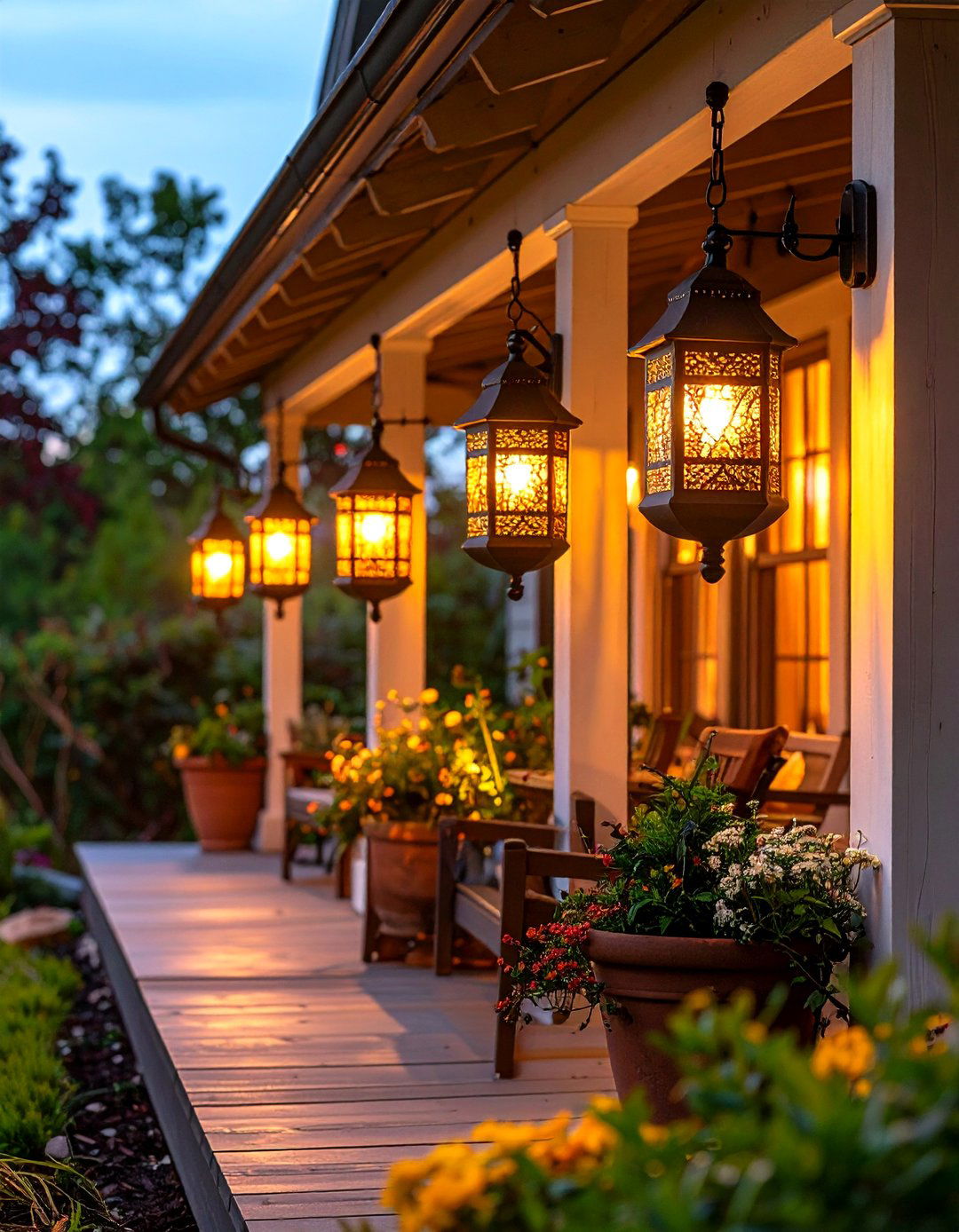
Surprisingly, swapping builder-grade porch sconces for square-framed mission lanterns delivers an outsized style payoff. Oil-rubbed bronze or iron housings paired with amber or seeded glass glow warmly at dusk and complement earth-tone palettes. Mount fixtures at roughly two-thirds the door height for balanced illumination, and consider matching pendant lights beneath deep porch ceilings for cohesive layering. Select LED bulbs in the 2700-3000 K range to mimic candle warmth rather than cool blue daylight. Integrated photocells or smart switches preserve authenticity while easing nightly operation. Delmar Fans Lamps Plus Architectural Digest
10. Craftsman Multi-Pane Windows with Bold Trim
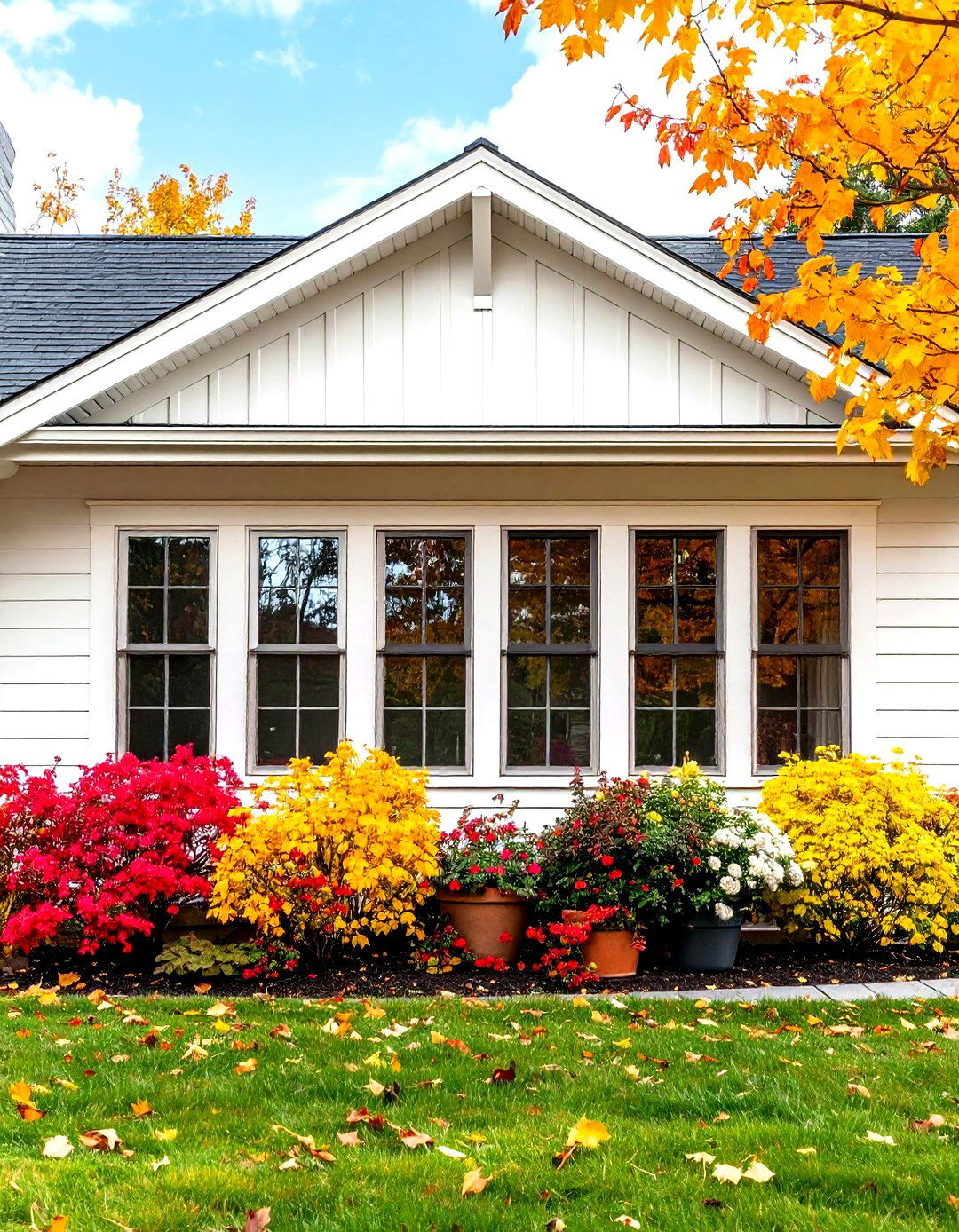
To, thick head casings and stools framing vertically oriented windows shout Craftsman craftsmanship. Simulated-divided-light top sashes maintain the period look even in modern energy-efficient units. Use 1×4 side casings paired with a beefier 1×6 header to create an eyebrow of shade that deepens shadows and texture. Painting sash rails a slightly darker tone than surrounding trim adds subtle definition. Inside corners where trim pieces meet should be crisp and square—skip ornate crowns in favor of straightforward joinery that respects the movement’s honest ethos. Philip or Flop Heirloom Windows Lowe's
11. Craftsman Native Landscaping and Stone Pathways
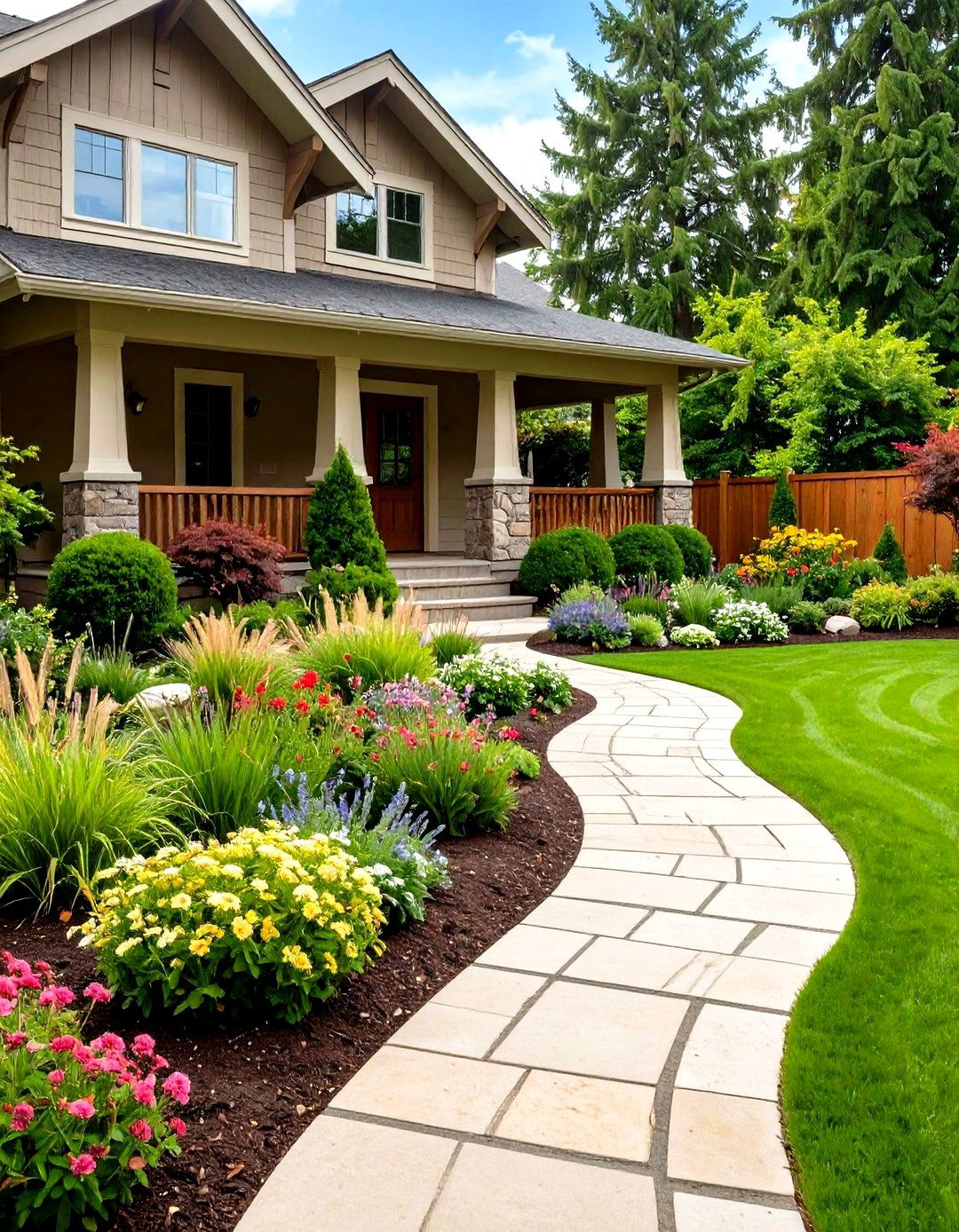
Another way to honor the Craftsman love of nature is to blur house and yard with regionally appropriate plantings. Layer low shrubs, ornamental grasses, and perennial blooms to keep the porch skirt visually soft while requiring minimal irrigation. Curving stone or gravel paths echo porch pier masonry and guide guests to the entry. Use boulders or timber edging to create gentle terraces on sloped lots, ensuring the home appears nestled rather than perched. Native plants also support local pollinators, bringing a living, seasonal show to the front garden. Houzz Pacific Garden Design
12. Craftsman Brick or Stone Knee Walls for Porch Definition
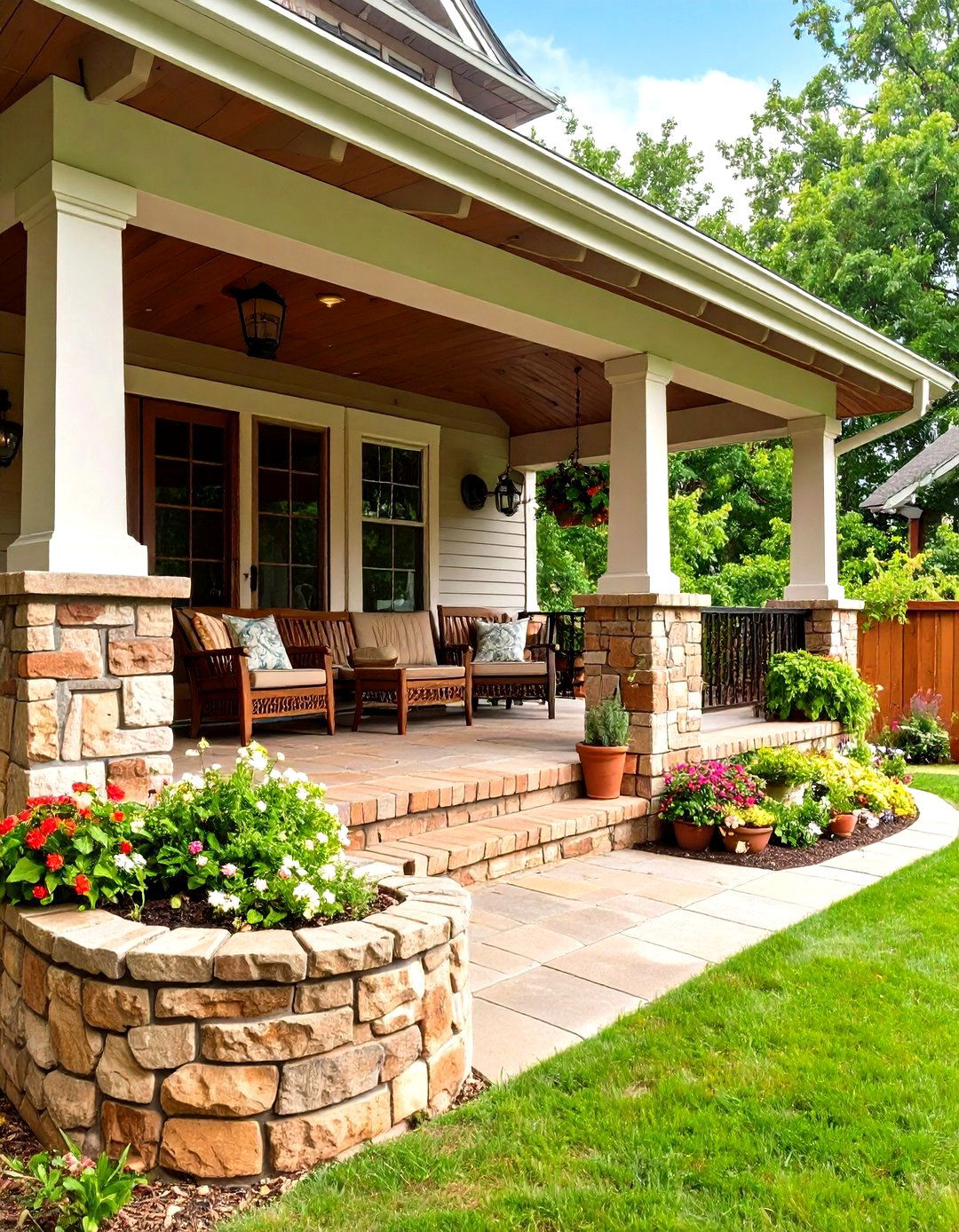
Certainly, a low masonry knee wall—18 to 24 inches tall—around the perimeter of a porch supplies both seating ledge and architectural heft. Choose rock-faced stone or tumbled brick whose colors tie into the main foundation for cohesion. Topping the wall with a thick capstone offers a convenient perch for coffee mugs or potted herbs. Where climate allows, built-in planter pockets soften hard edges with trailing blooms that spill toward the steps. Because knee walls rise only partway to the rail height, they preserve sightlines while blocking errant toys or pets from rolling off the deck. DecorPad Houzz
13. Craftsman Wood Pergola Accents over Garages or Walkways
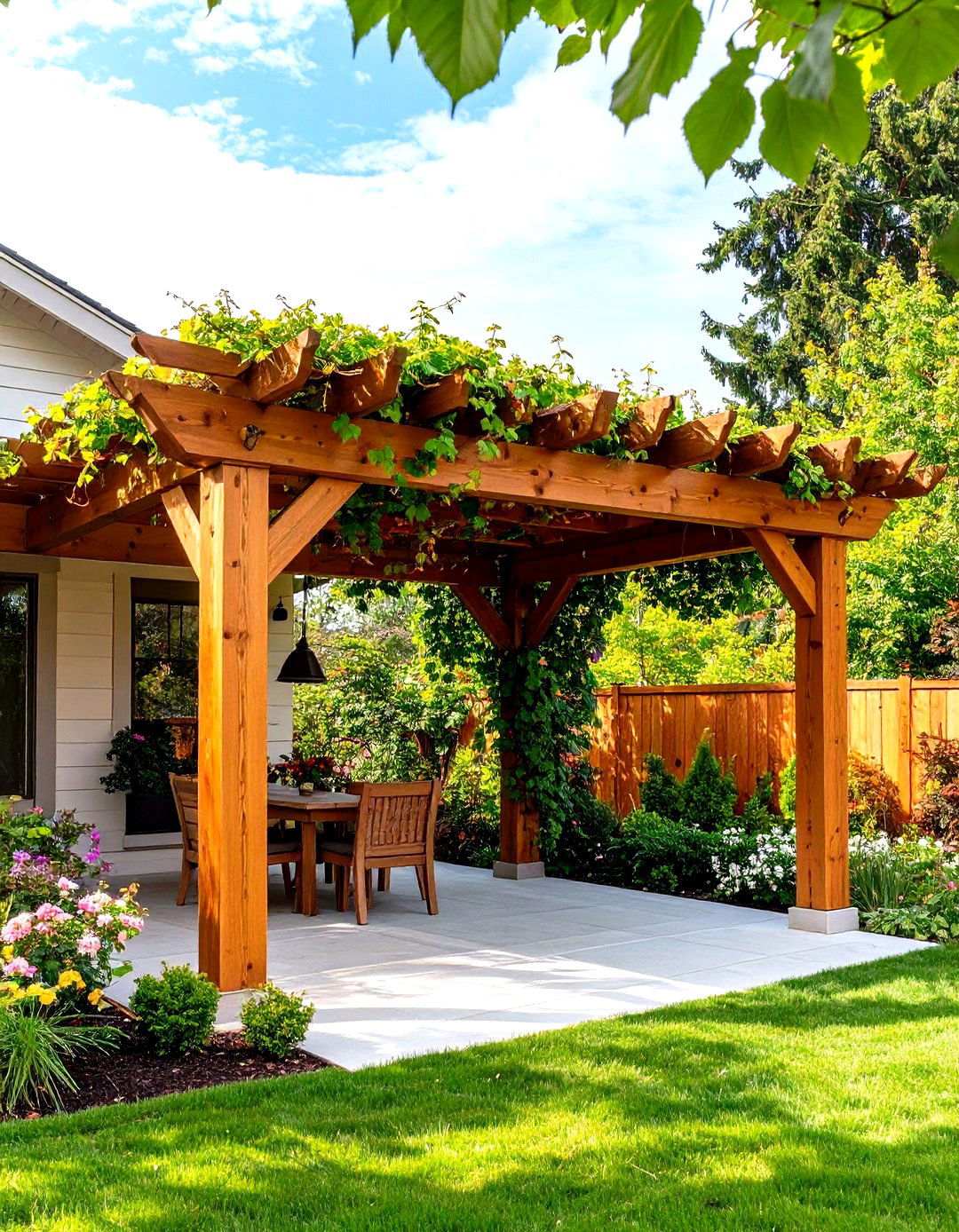
Looking for a budget-friendly flourish? A shallow timber pergola mounted above the garage doors or side entry references the porch beam language and breaks up wide wall planes. Chamfered purlin ends that echo gable brackets keep the story consistent. Stain beams to match rafter tails for unity, and add climbing vines like clematis for dappled summer shade. Properly flashed ledger boards and stainless lag screws ensure durability without detracting from period charm. Even a pair of simple outriggers topped by 2×4 slats can suggest a pergola rhythm when lot lines limit projection depth. Fine Homebuilding Thrifty Decor Chick Craftsman Style
14. Craftsman Energy-Efficient Upgrades that Preserve Character
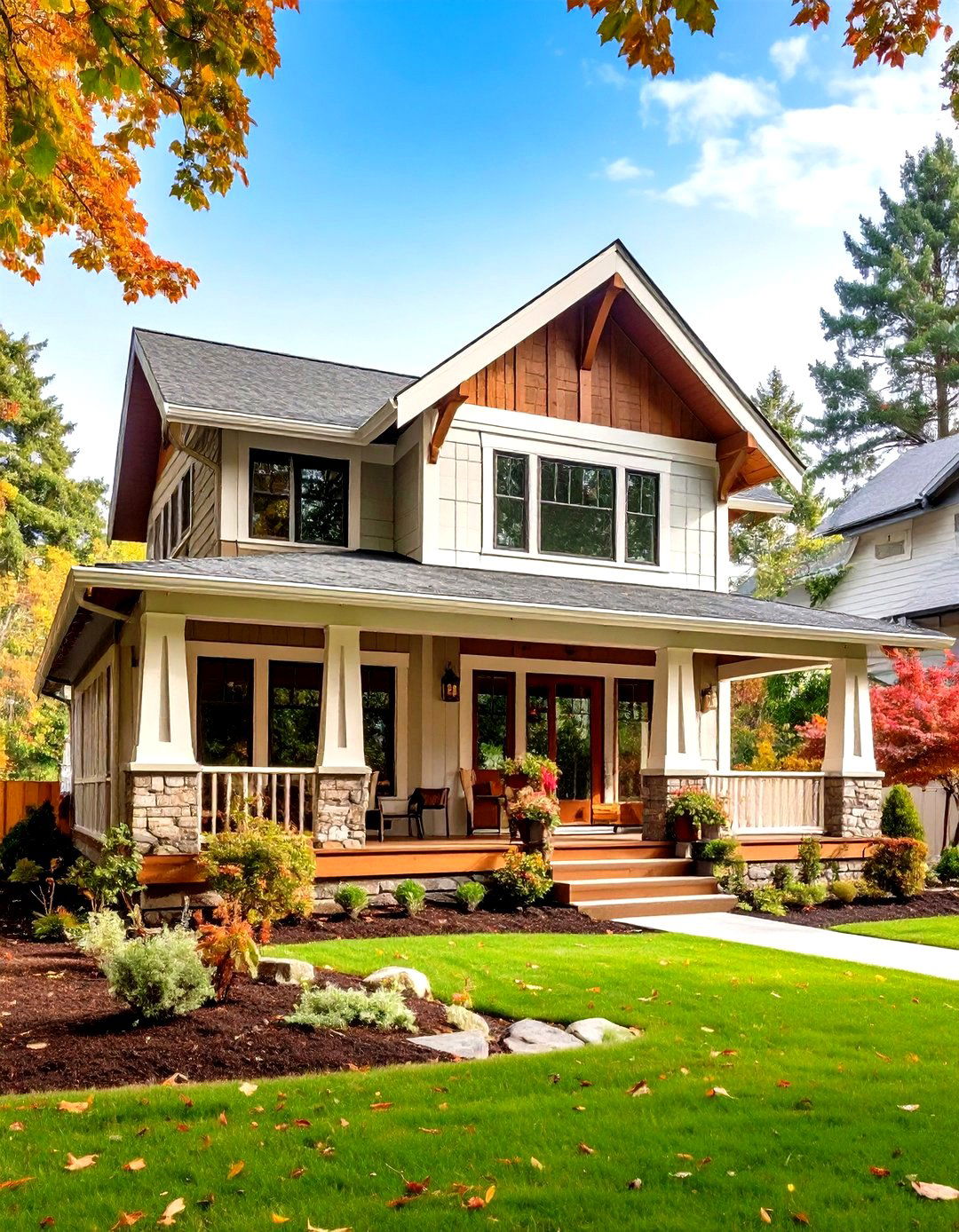
Despite their vintage roots, Craftsman exteriors adapt gracefully to modern performance standards. Steel-framed windows with narrow sightlines boost R-values while echoing the slender muntins of original double-hung sash. Deep roof overhangs already shade interiors; pair them with low-emissivity glazing to minimize summer heat gain. Spray-foam insulation tucked behind tongue-and-groove porch ceilings quietly improves thermal comfort without altering visible materials. When replacing doors, select Energy-Star-rated models that replicate classic panel layouts so the look stays timeless even as utility bills drop. Euroline Steel Windows
15. Craftsman Dormer Windows to Break Up the Roof
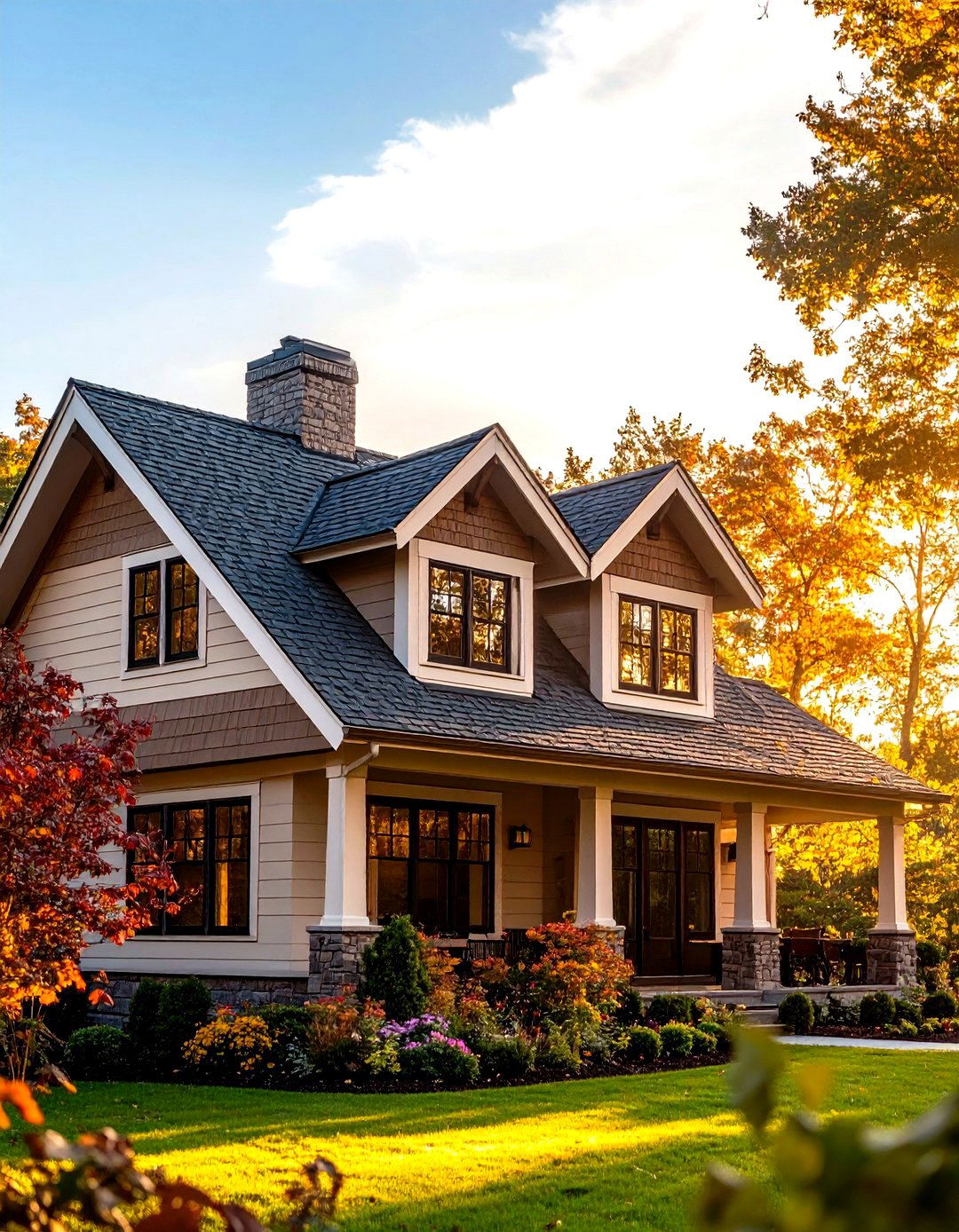
Surprisingly, adding a dormer keeps rooflines interesting while sneaking natural light into attic conversions. Gable dormers suit Craftsman best, mirroring the main roof pitch and providing a vertical accent. Keep siding and trim identical to the primary façade so the dormer feels integral rather than pasted on. Inside, the new alcove becomes a reading nook or workspace flooded with daylight. From the street, dormers lend cottage charm and visually reduce long roof expanses, making even larger houses feel human-scaled. Pella Better Homes & Gardens
16. Craftsman Handcrafted House Numbers and Mailbox Details
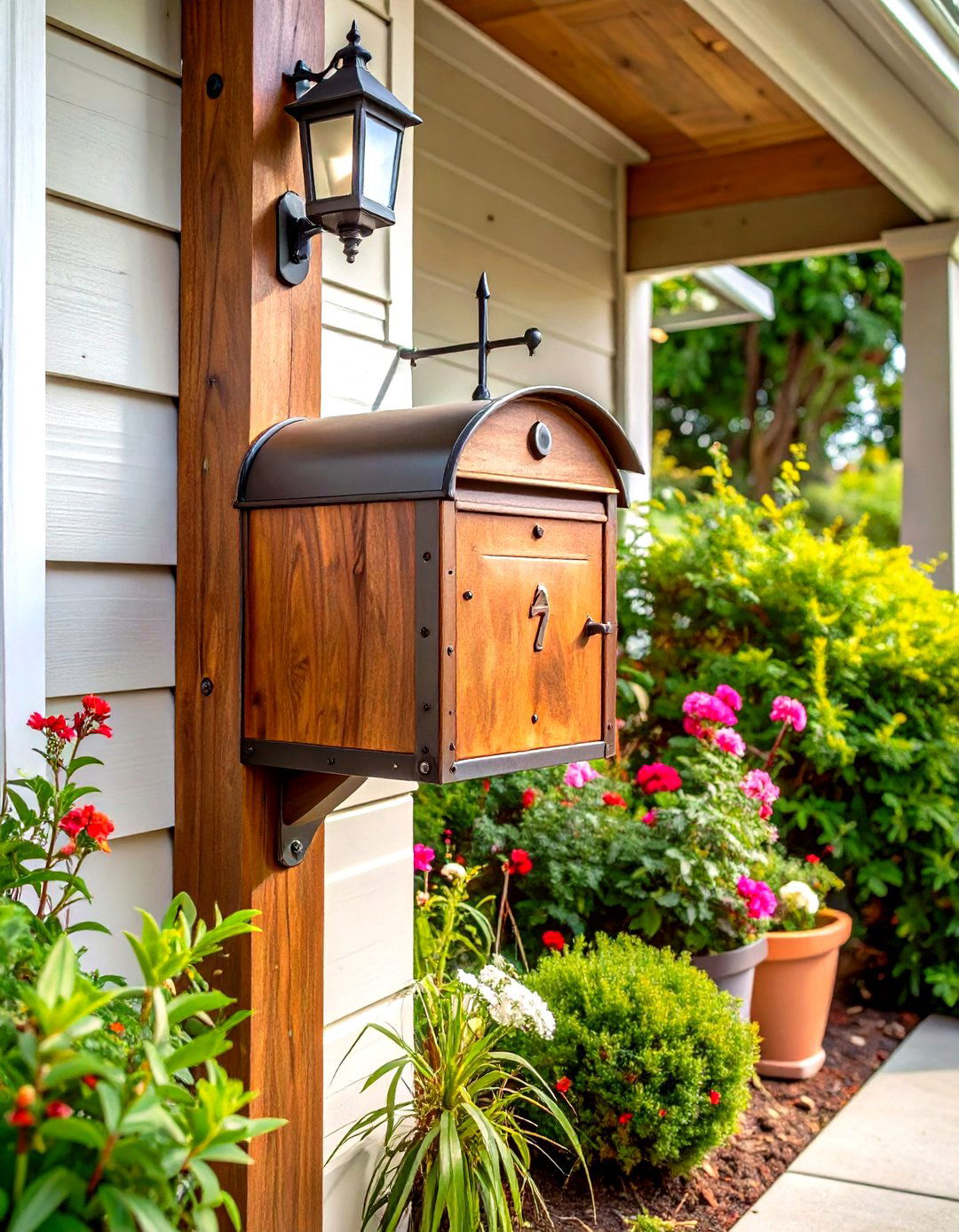
Another, small accessories punch far above their weight in curb-appeal value. Solid bronze or cast-iron address numerals featuring Arts-and-Crafts typefaces add instant authenticity beside the door or on a porch beam. Pair them with a wall-mounted mailbox in hammered metal or stained wood trimmed by simple mortise-and-tenon joints. Patinated finishes weather gracefully, echoing aged porch lanterns and hinges. Mount numbers with hidden fasteners for a clean silhouette, and ensure mailbox lids feature protective lips to keep incoming letters dry without modern plastic inserts. Old California Atlas Signs and Plaques Amazon
17. Craftsman Low Stone Retaining Walls for Layered Curb Appeal
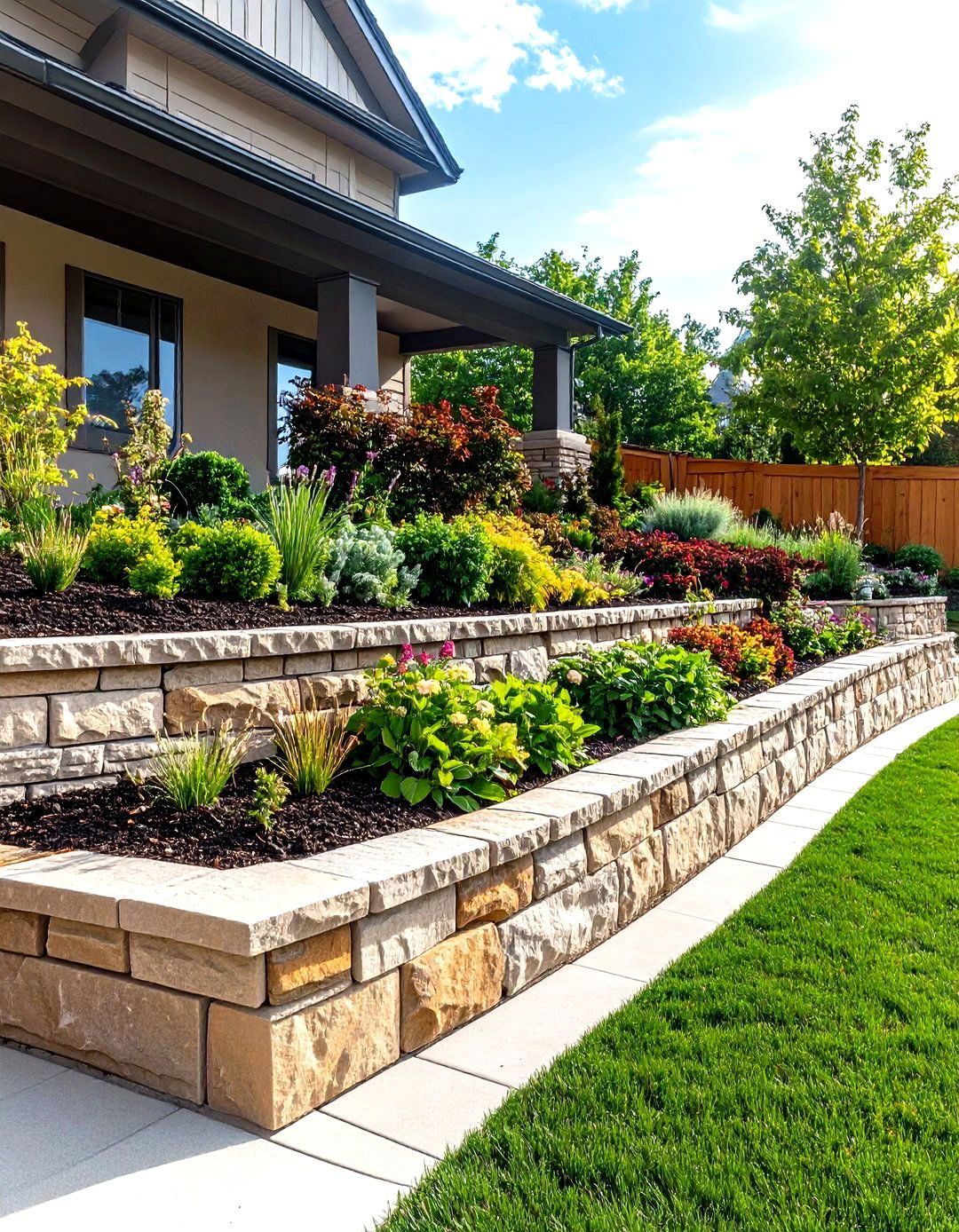
Owing to their bungalow roots, many Craftsman homes sit on shallow terraces. Dry-stack stone retaining walls only two or three courses high tame slight slopes and create opportunities for staggered planting beds. Select fieldstone or split-face blocks whose color families repeat porch pier masonry for continuity. Cap with flat stones wide enough to double as informal seating during neighborhood gatherings. Because walls stay low, they guide rainwater gently while preserving an open, friendly feel rather than fortress-like barriers. Houzz
18. Craftsman Warm Accent Colors on Door and Window Sashes
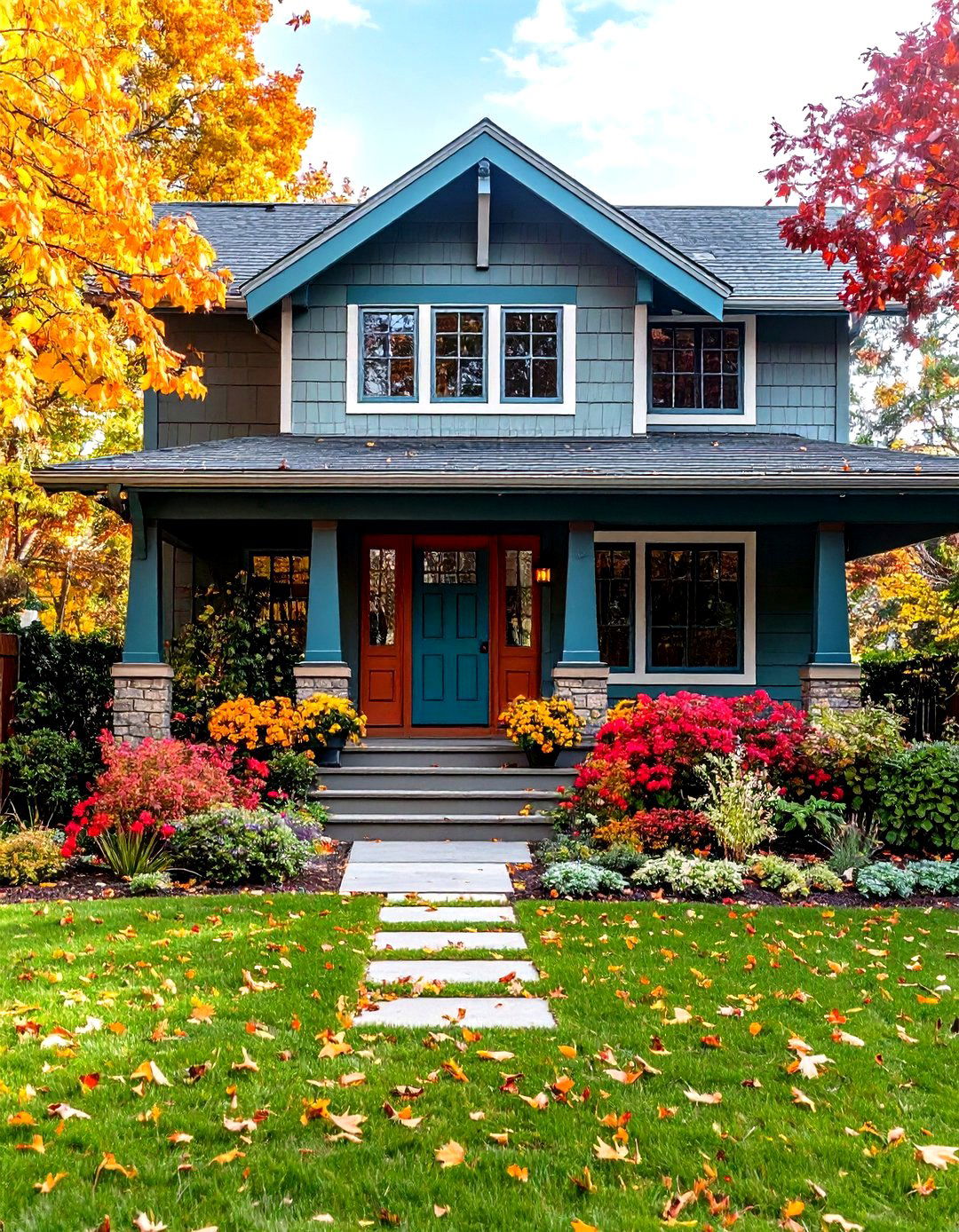
Certainly, strategic pops of color enliven earthy body tones. Deep russet, mustard gold, or muted teal applied to door panels, window sash rails, or knee-brace brackets draw the eye to handcrafted details without overwhelming the palette. Choose accent hues already present in brick flecks or landscape blooms for organic cohesion. A satin finish provides richness without glaring sheen, and UV-resistant formulations keep pigments true under long porch overhangs. Repeat the accent on porch swing pillows or planters to tie architecture and décor together. Sherwin-Williams Modern Bungalow Furniture and Design
19. Craftsman Exposed Beams and Braces under Porch Ceilings
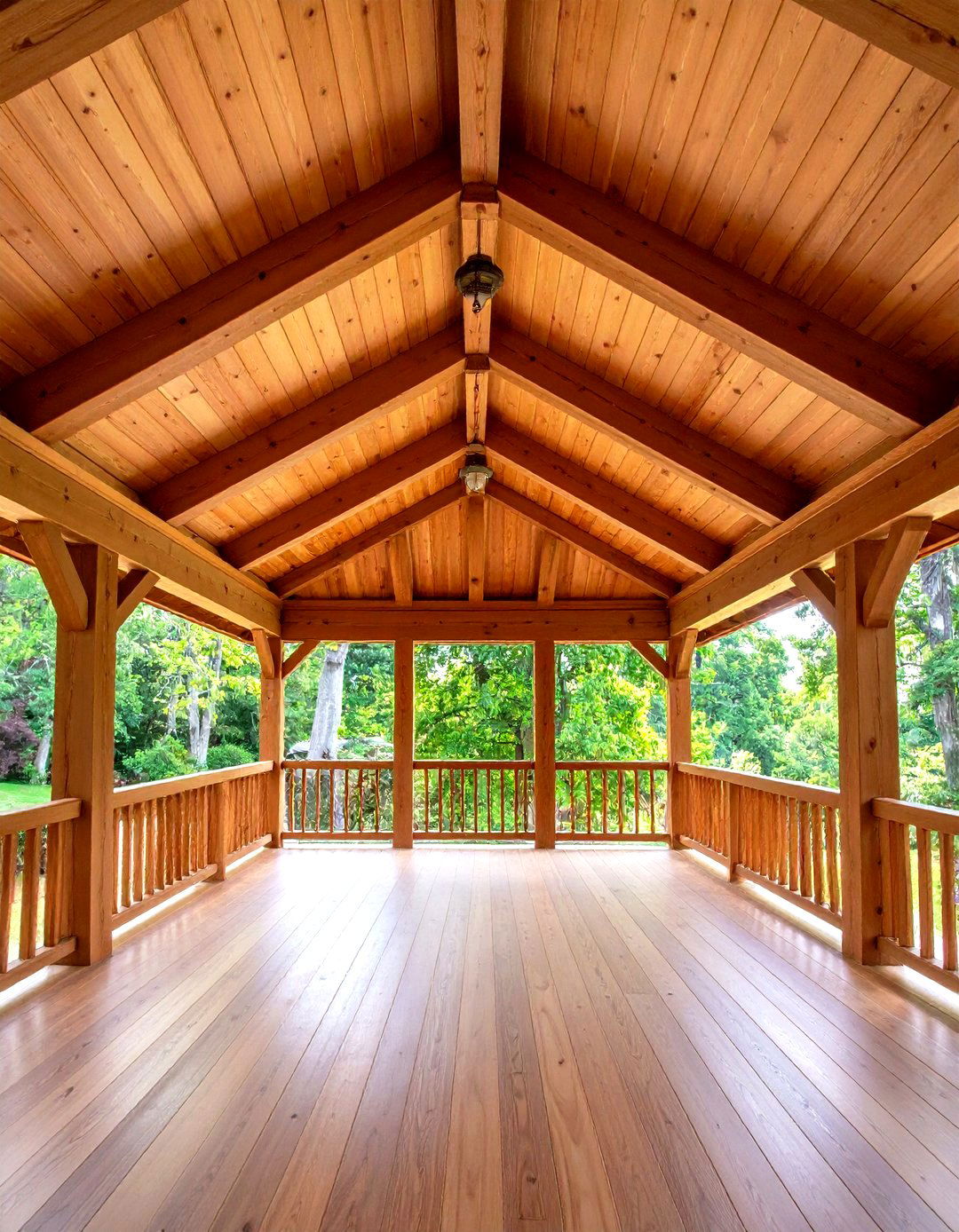
By leaving porch ceiling joists visible—or adding decorative “false” beams—homeowners celebrate structure while gaining a place to route pendant-light wiring discreetly. Suspend a single hefty tie beam between columns, then add chamfered 4×4 braces mirrored at each column connection for symmetry. Stain beams a shade darker than ceiling boards to highlight depth. Where insects pose a threat, opt for rot-resistant cedar or factory-primed composites that hold stain evenly while shrugging off moisture. This simple carpentry accent transforms the porch from afterthought to architectural showcase. Wholesale Millwork Goddensudik
20. Craftsman Built-In Benches for Inviting Seating
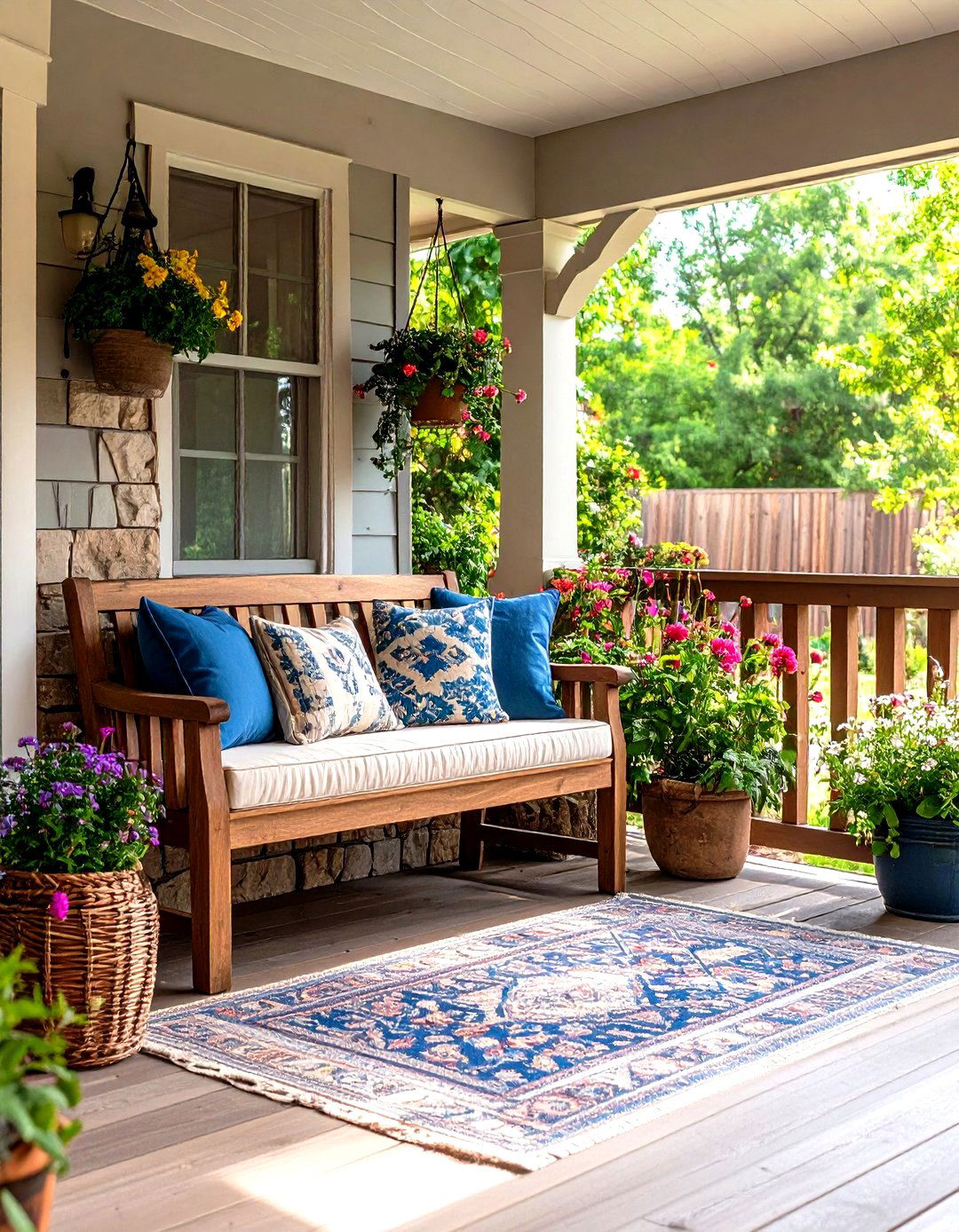
Finally, integrating a built-in bench along one porch wall or into a stone knee-wall base invites lingering conversations and maximizes small footprints. Use the same porch decking for the seat surface to keep materials consistent, and add a hinged lid for hidden shoe storage. Stone veneer surrounds create sturdy bench ends that visually tie into column piers. Finish the wood with exterior-grade clear coat so grain warmth shines beneath pillows in Arts-and-Crafts textiles. Guests will instinctively choose this cozy perch, proving how thoughtful joinery can turn simple structure into cherished gathering space. TimberTech McClurg Team
Conclusion:
From the honest heft of tapered columns to the welcoming glow of mission lanterns, each of these twenty ideas distills what makes a Craftsman exterior feel handcrafted, enduring, and warm. Layering natural materials, earth-toned color, and purposeful detailing creates curb appeal that ages gracefully while supporting today’s comfort and efficiency goals. Choose the concepts that resonate with your home’s scale and setting, then let thoughtful craftsmanship guide every cut, finish, and fastening for results that feel both timeless and personal.


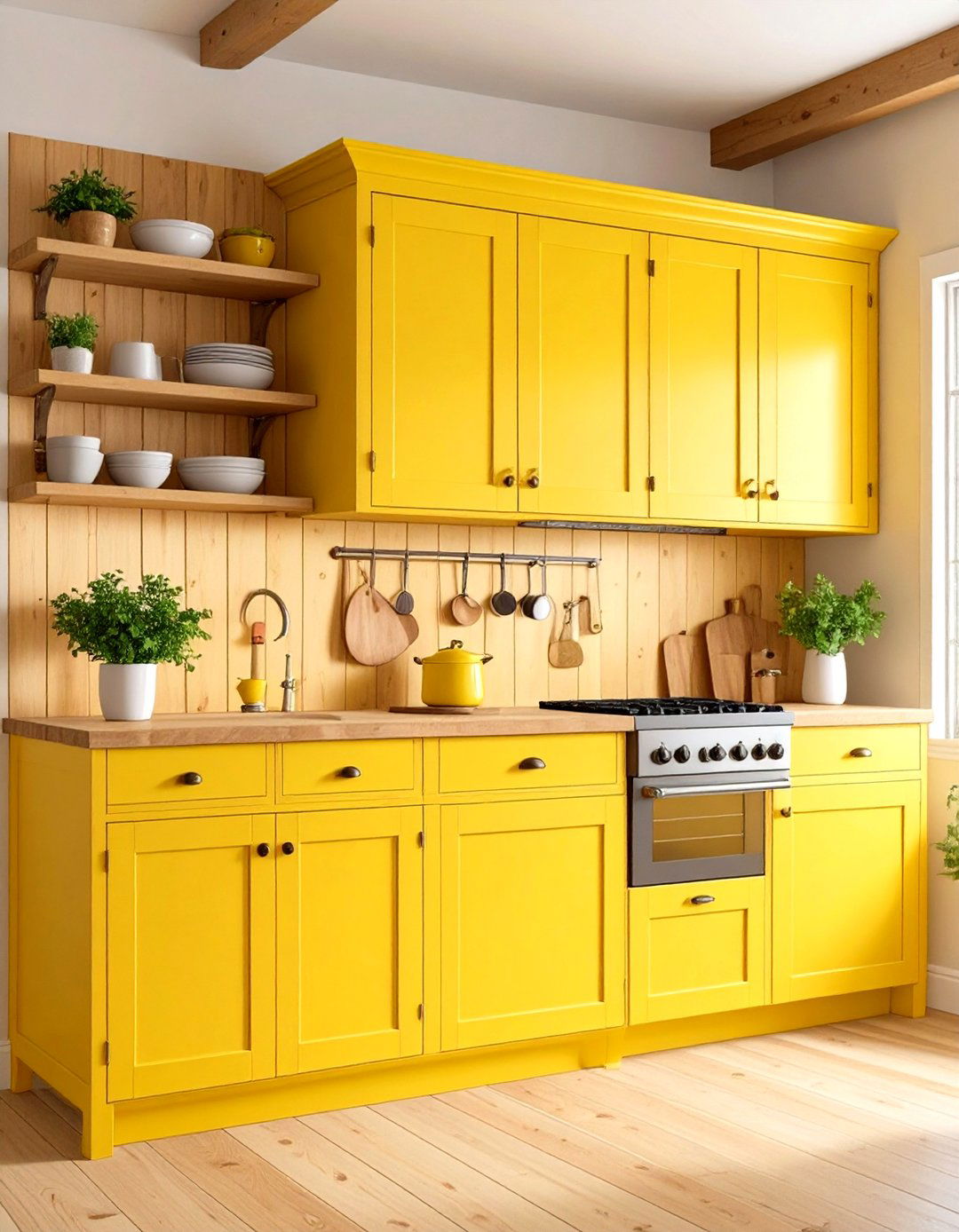
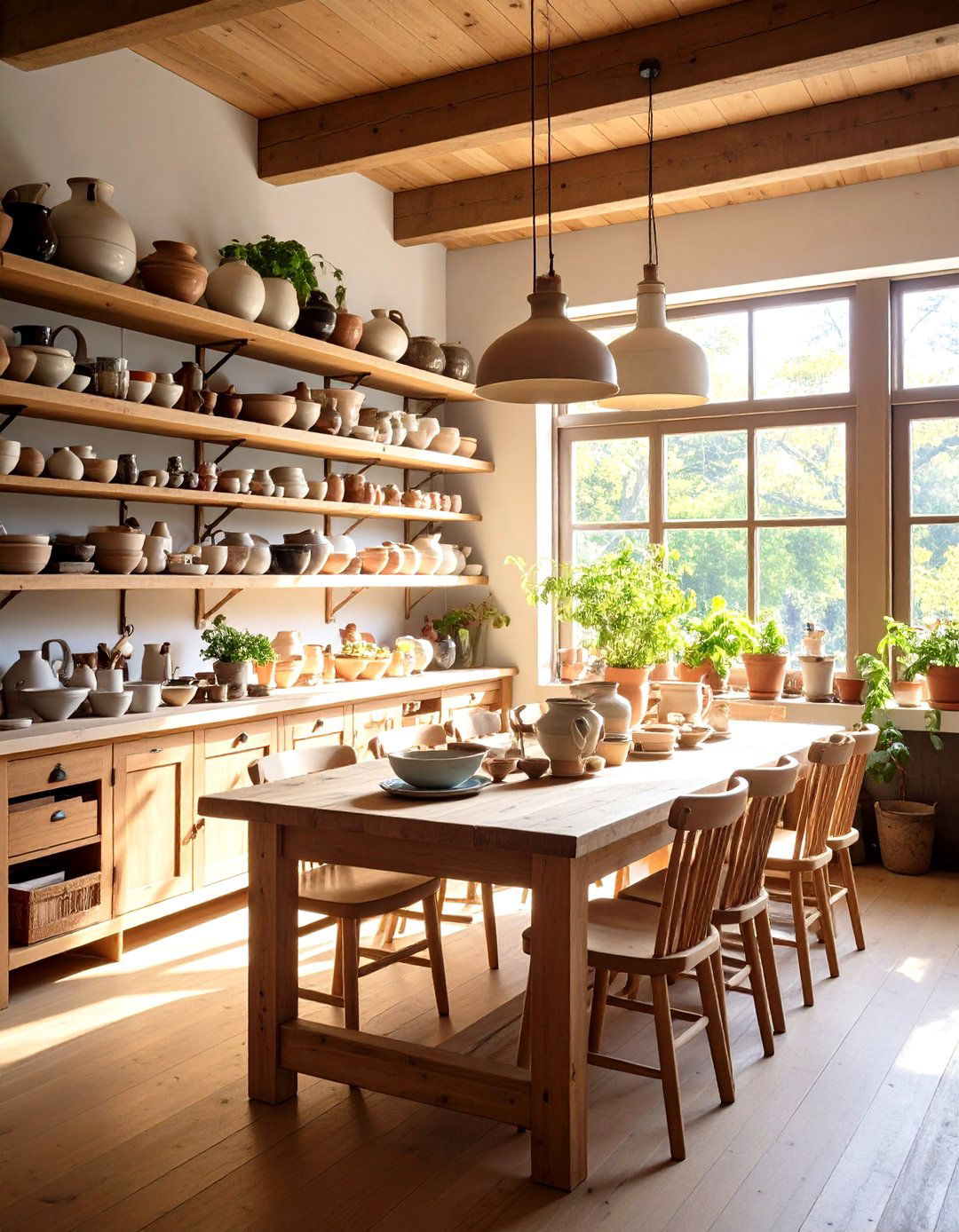
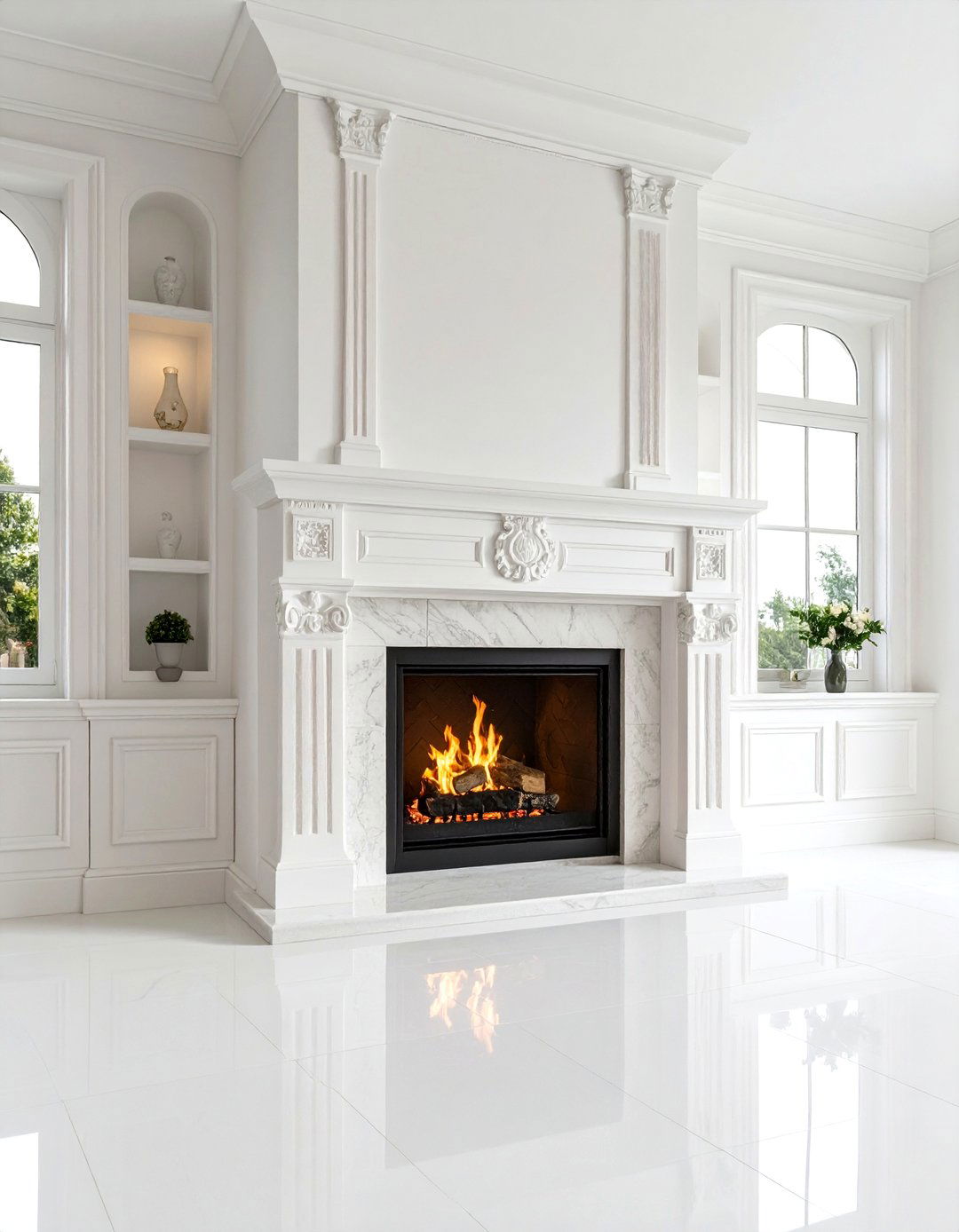
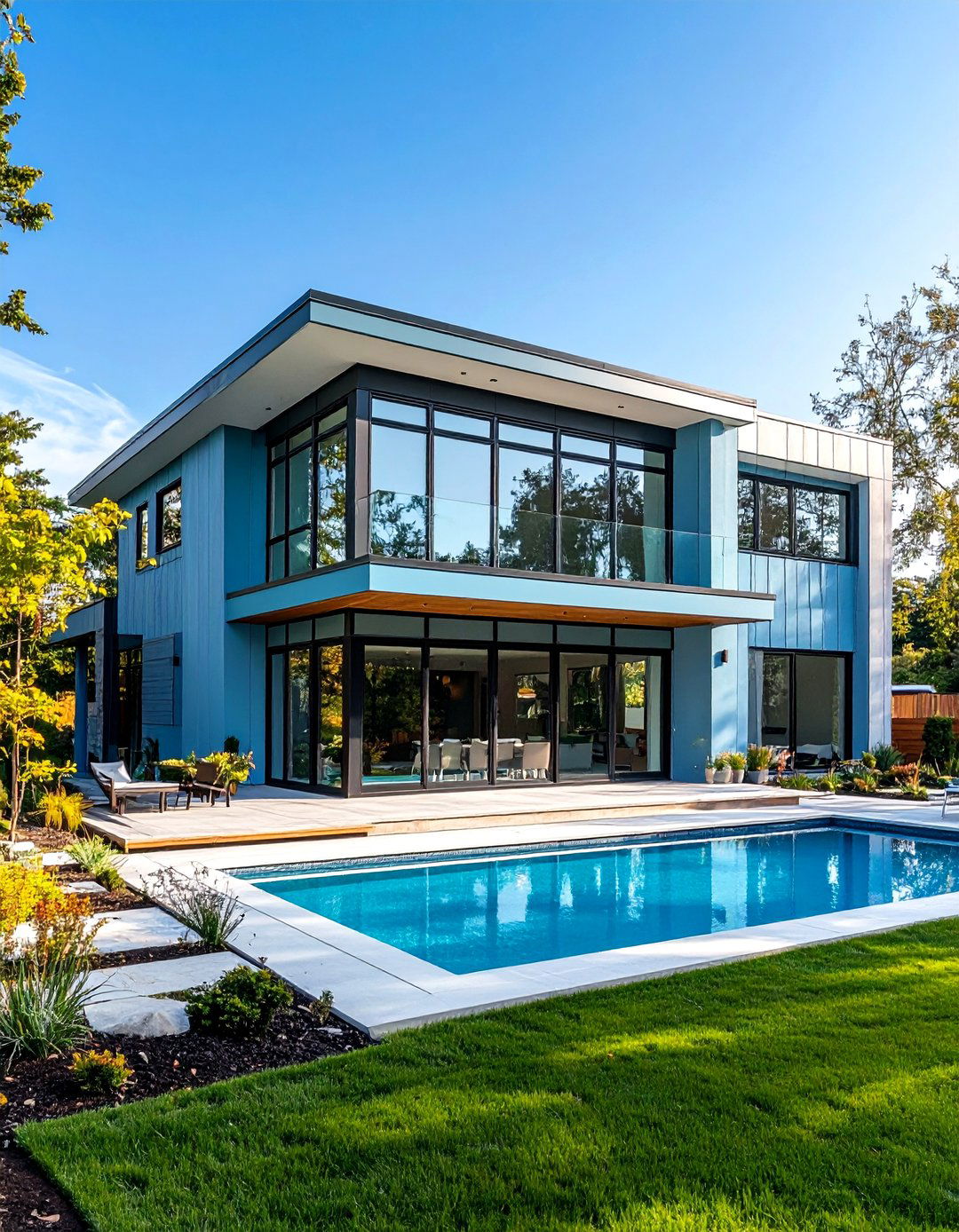
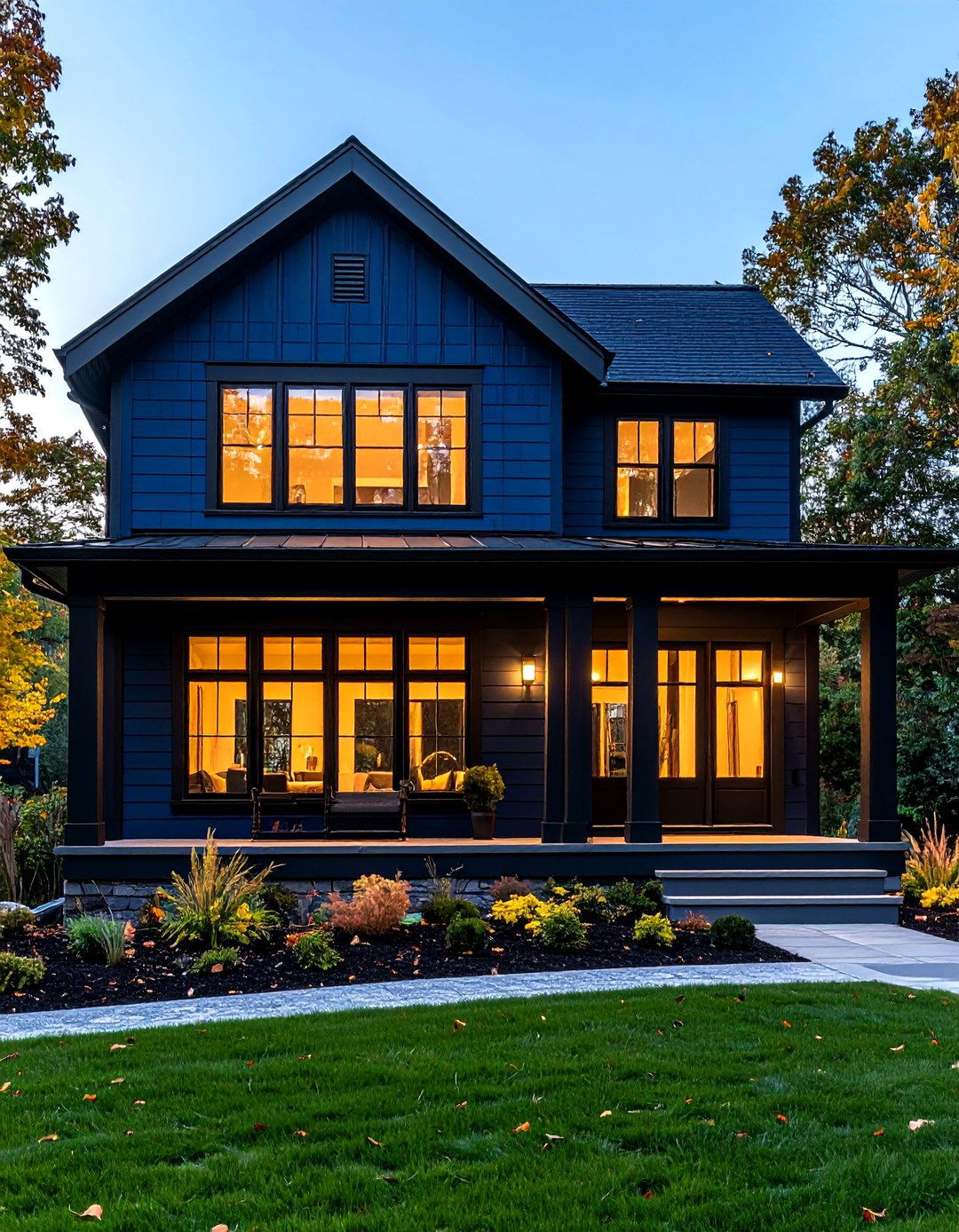
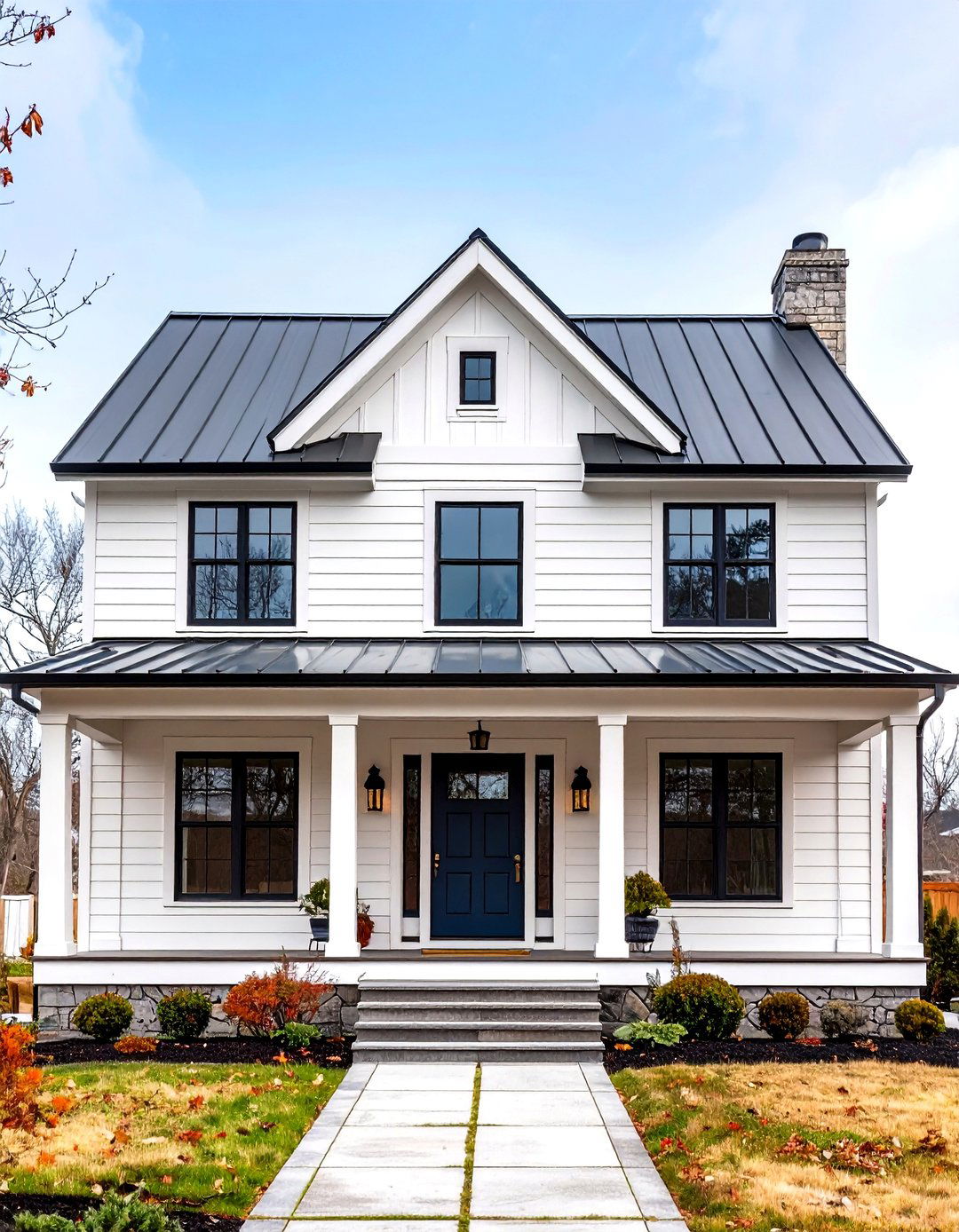
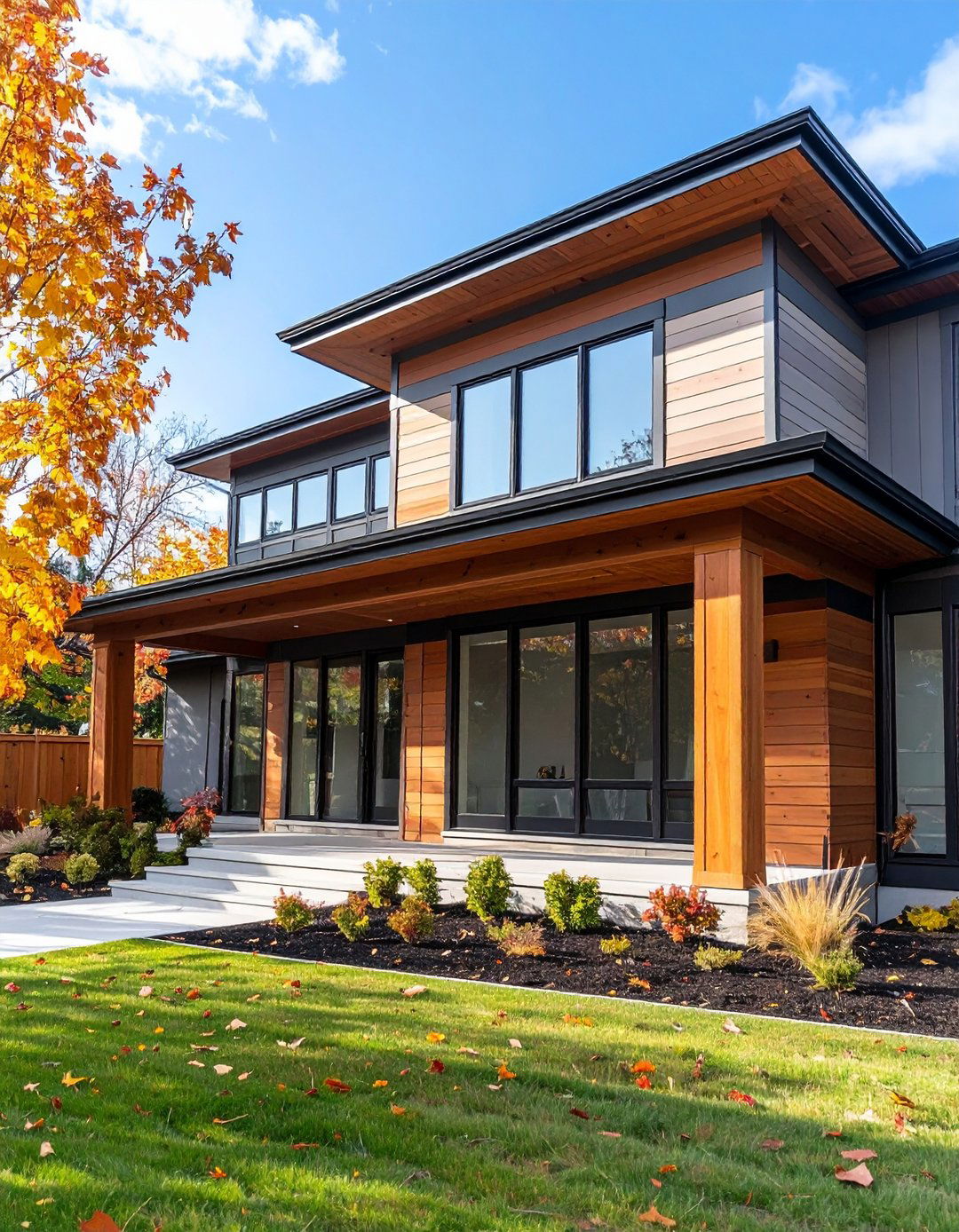
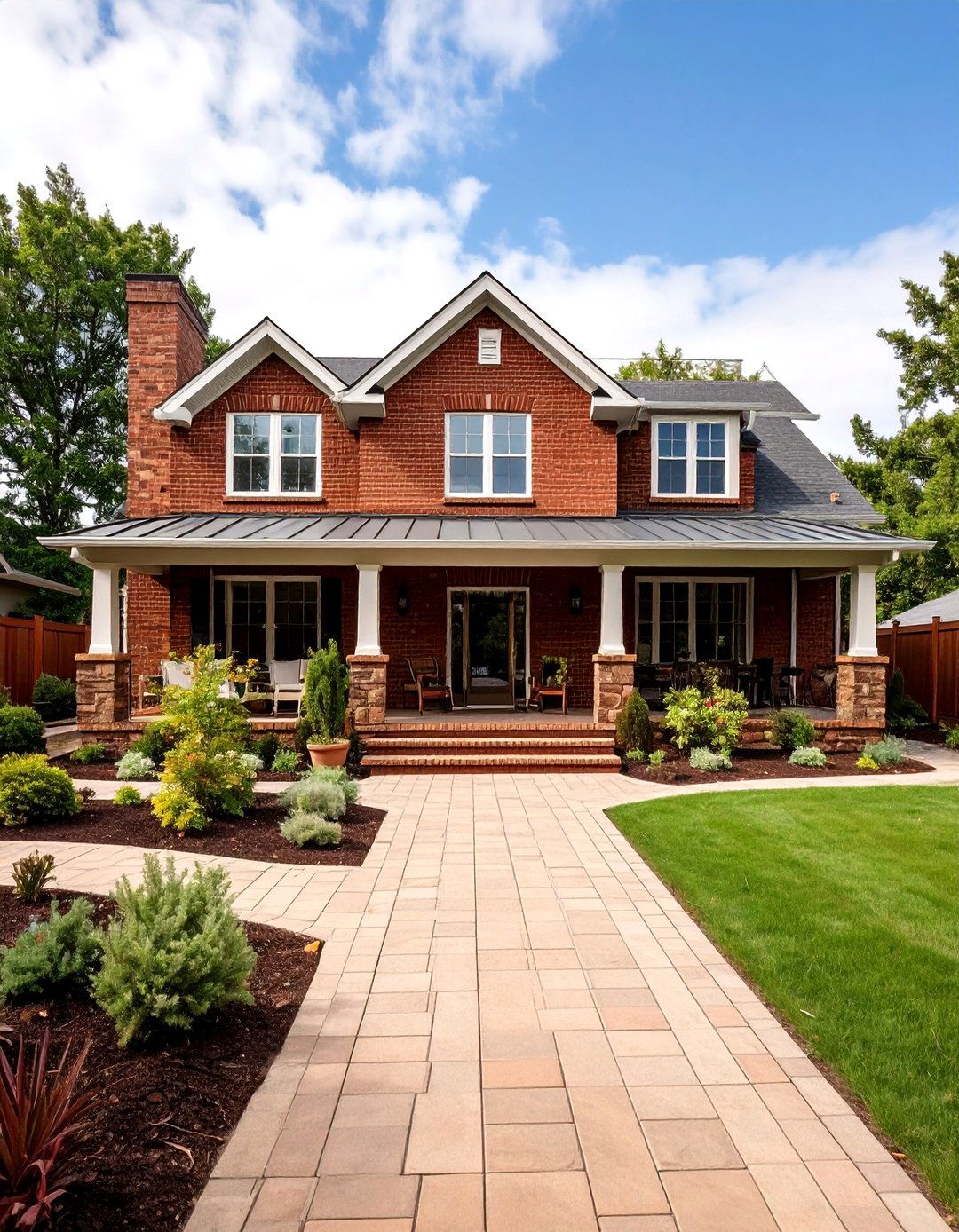
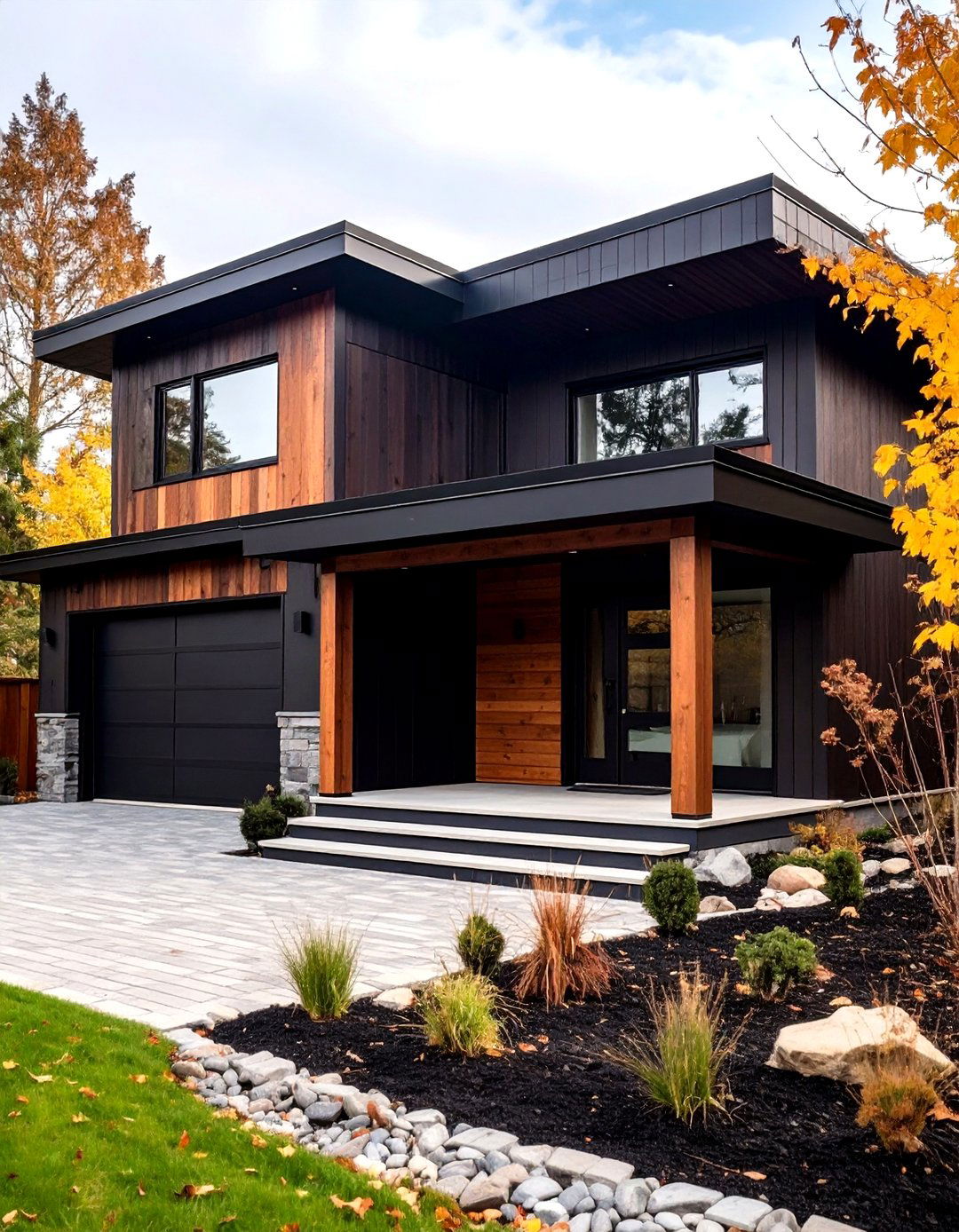

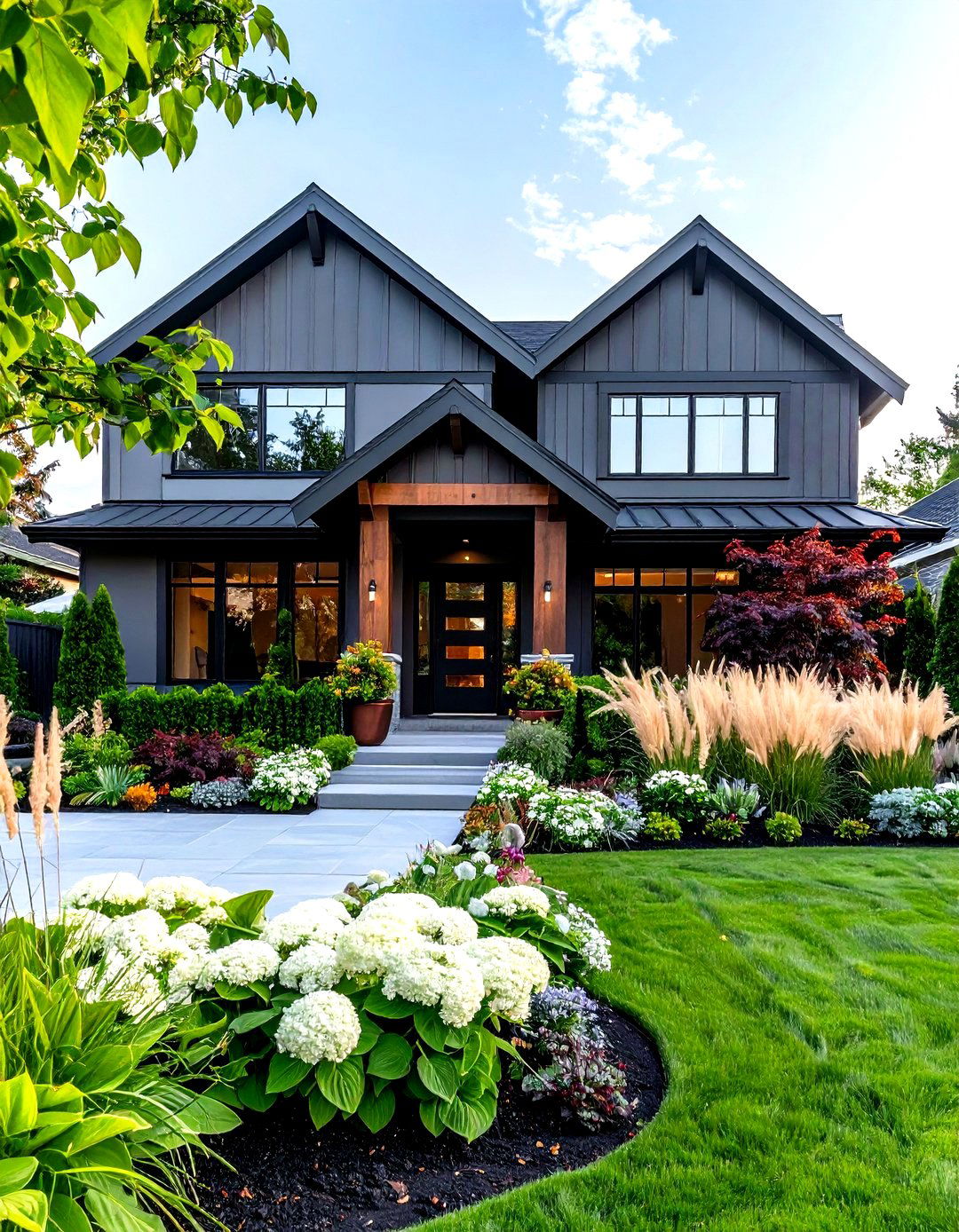
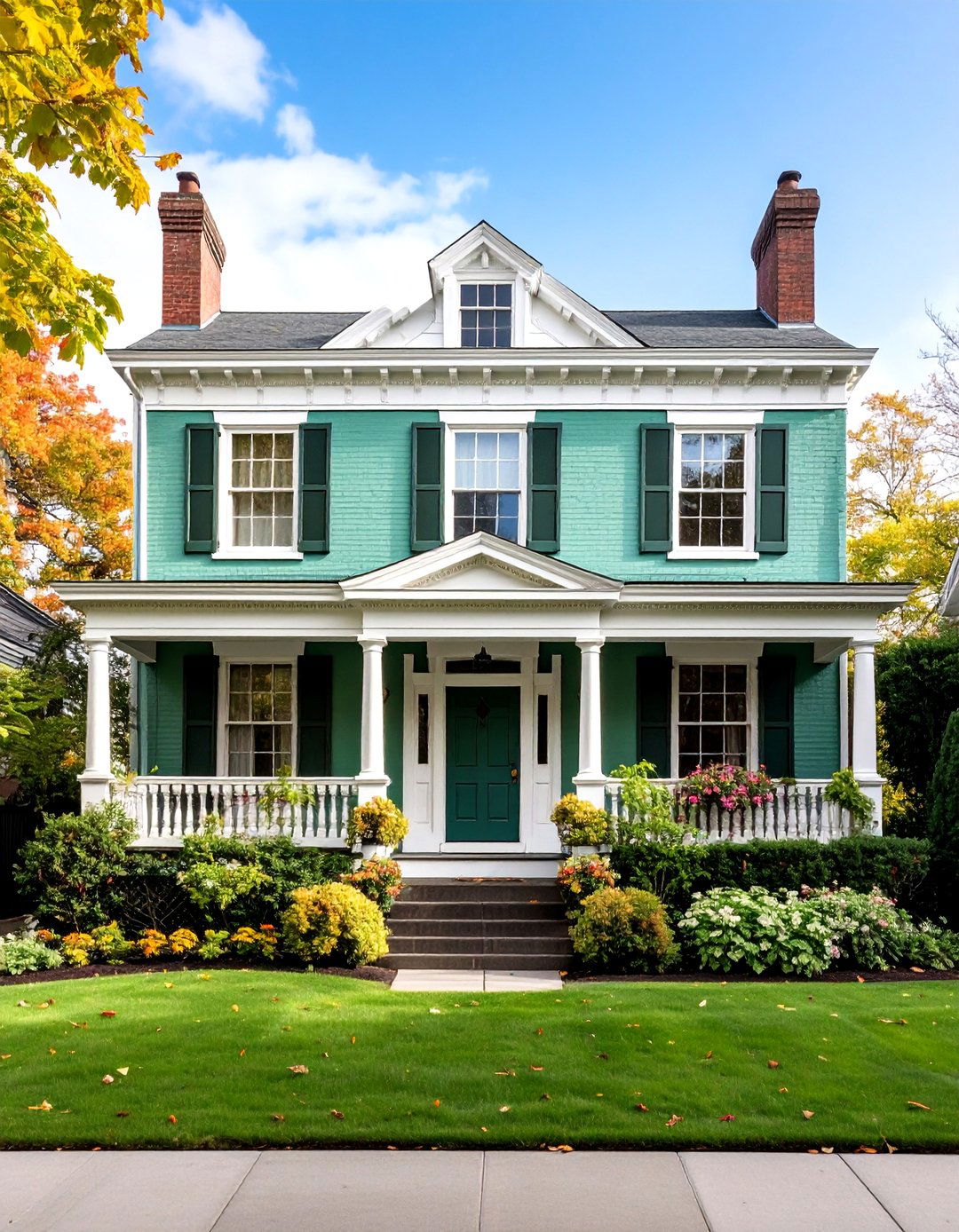
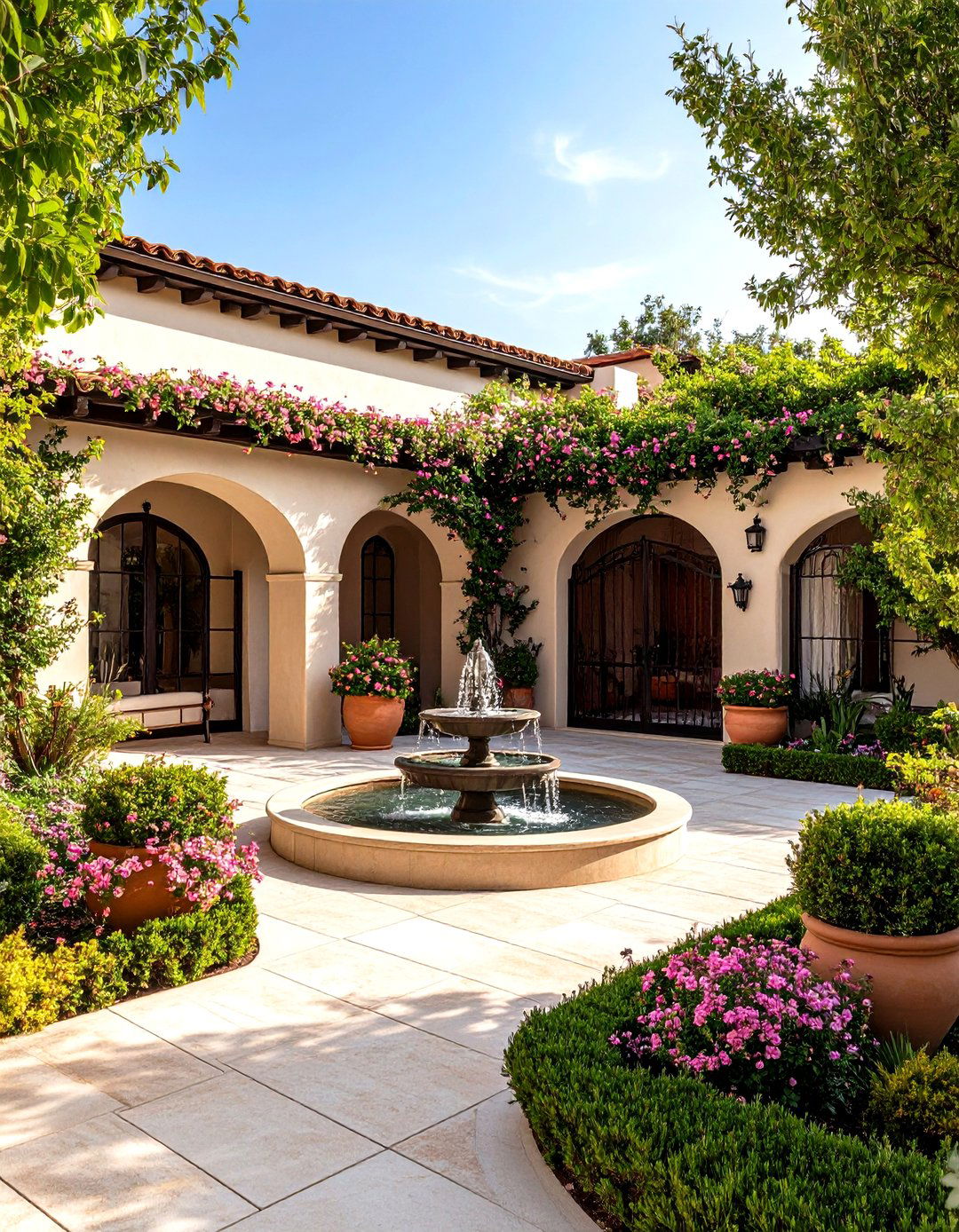

Leave a Reply